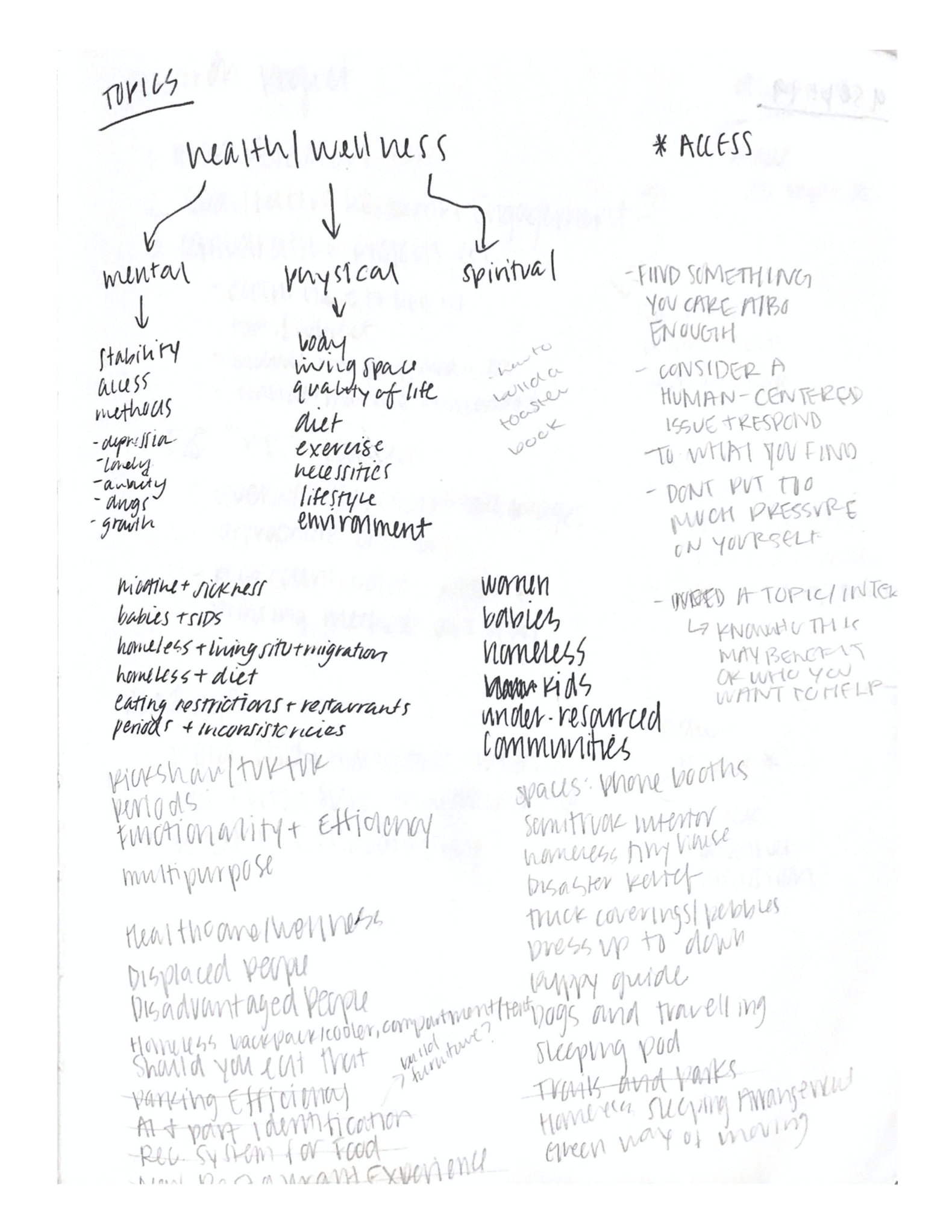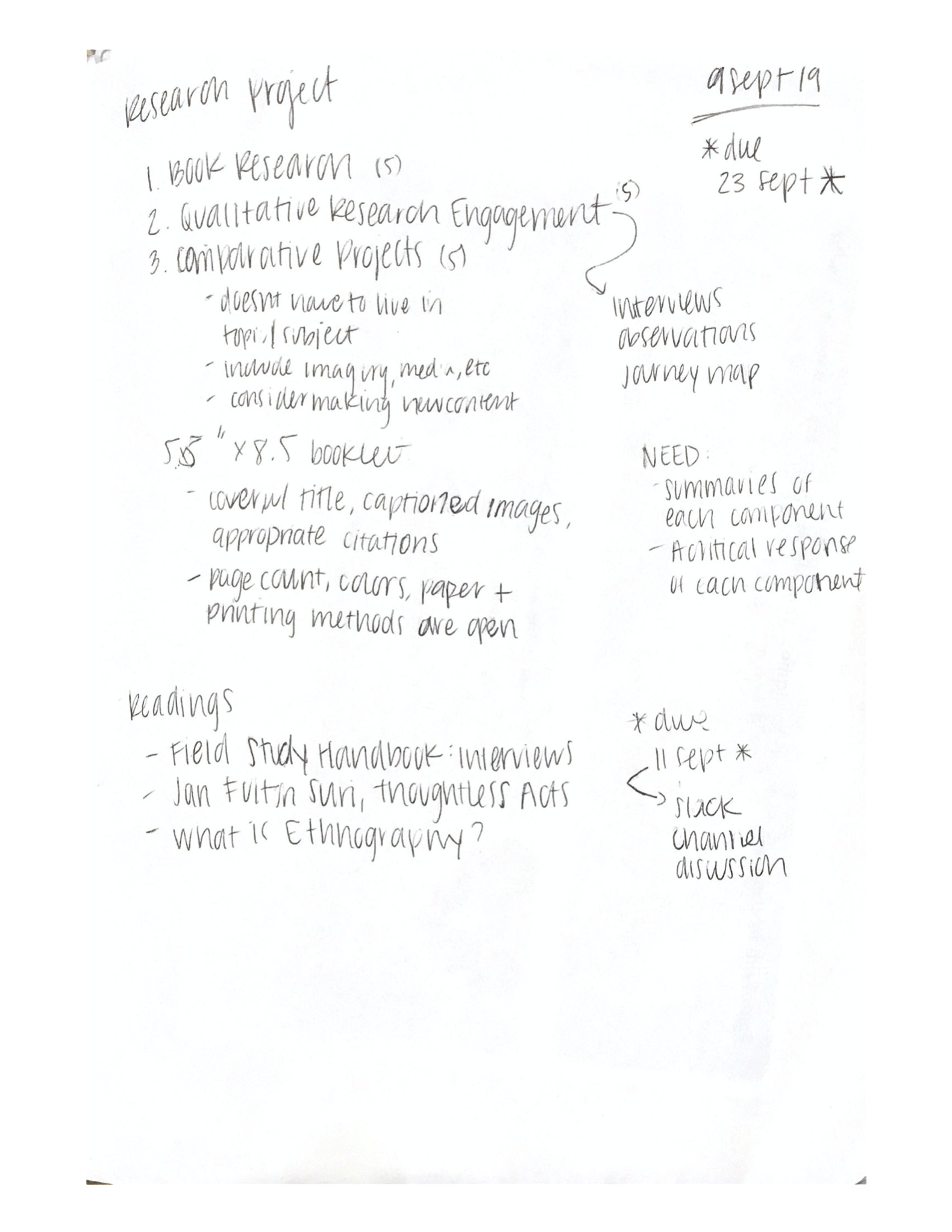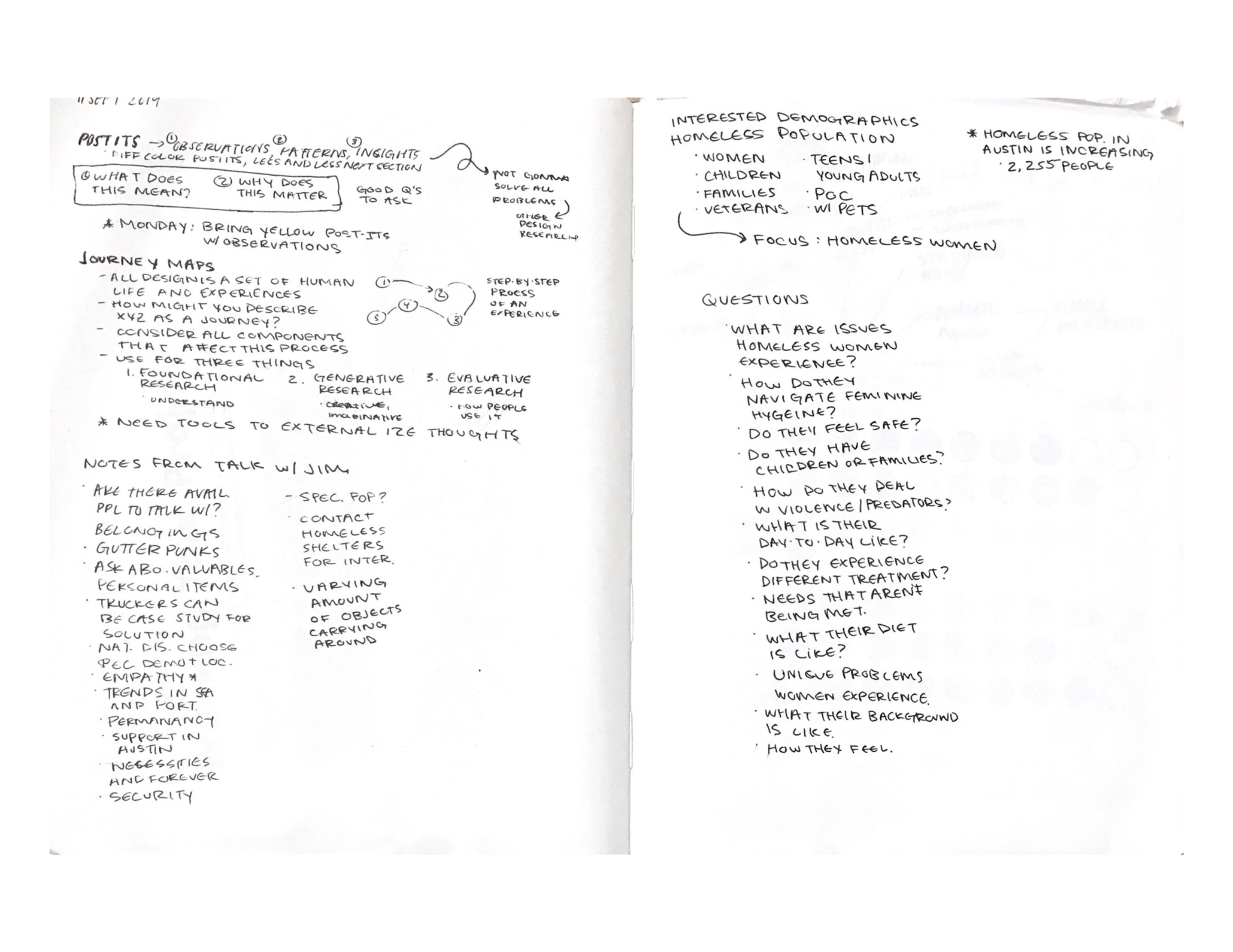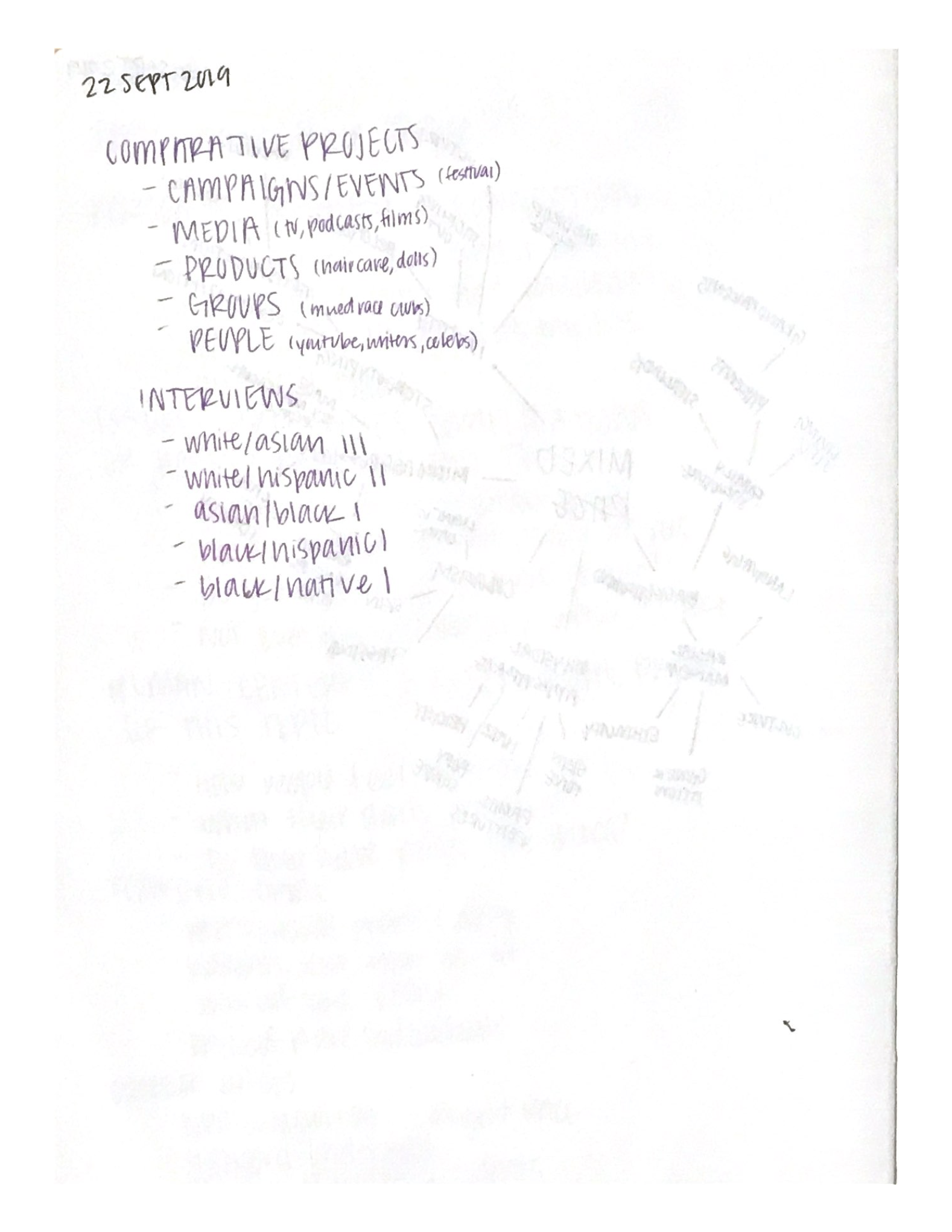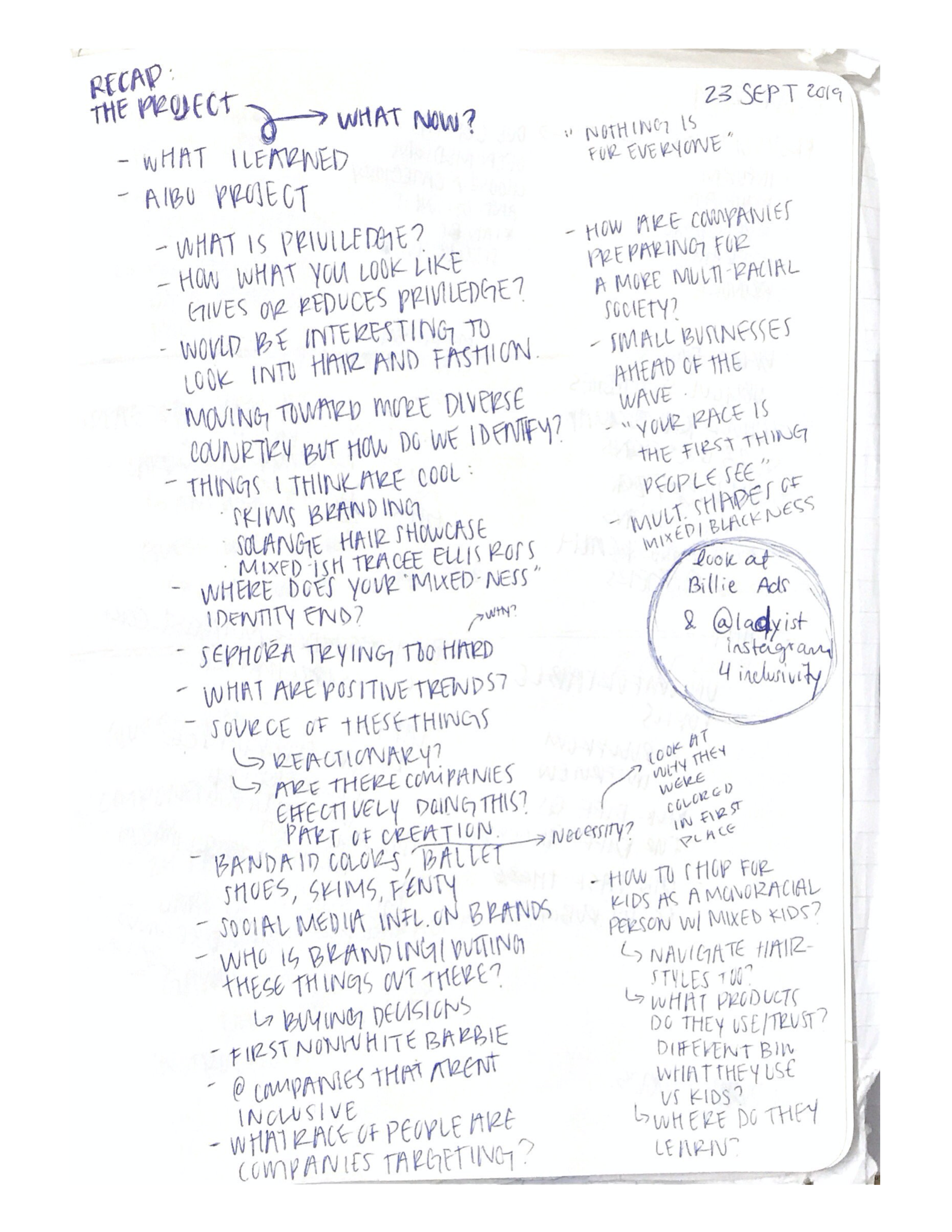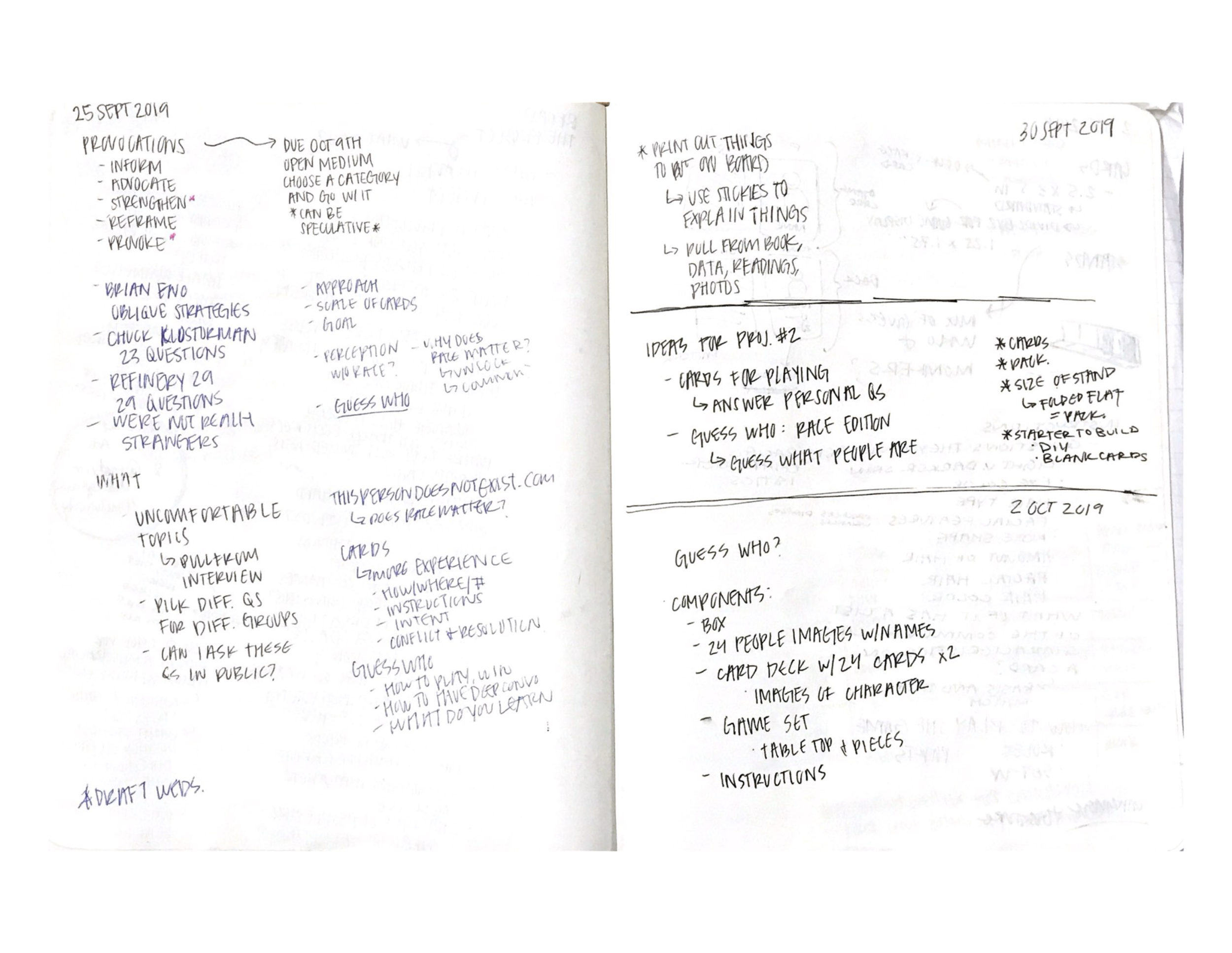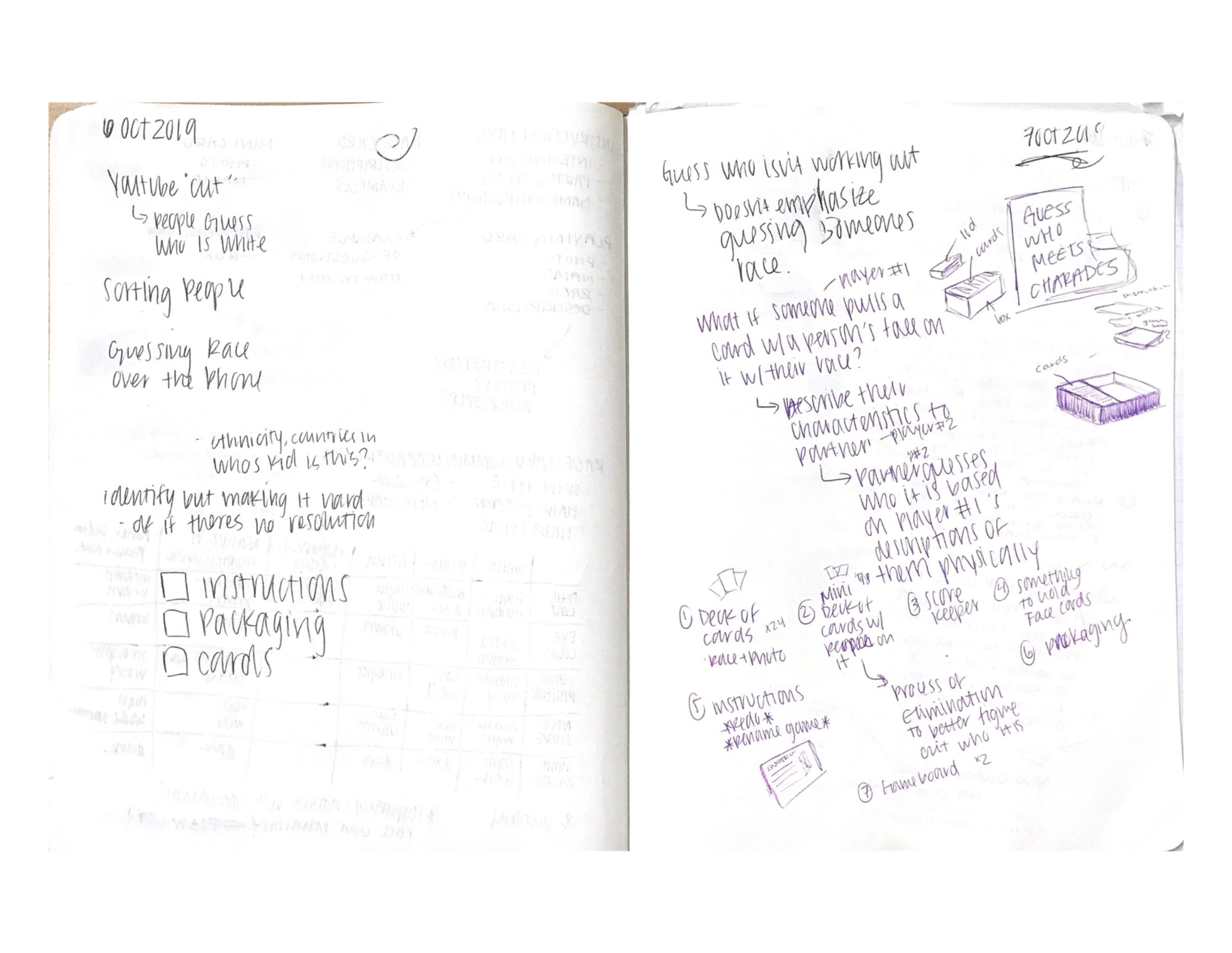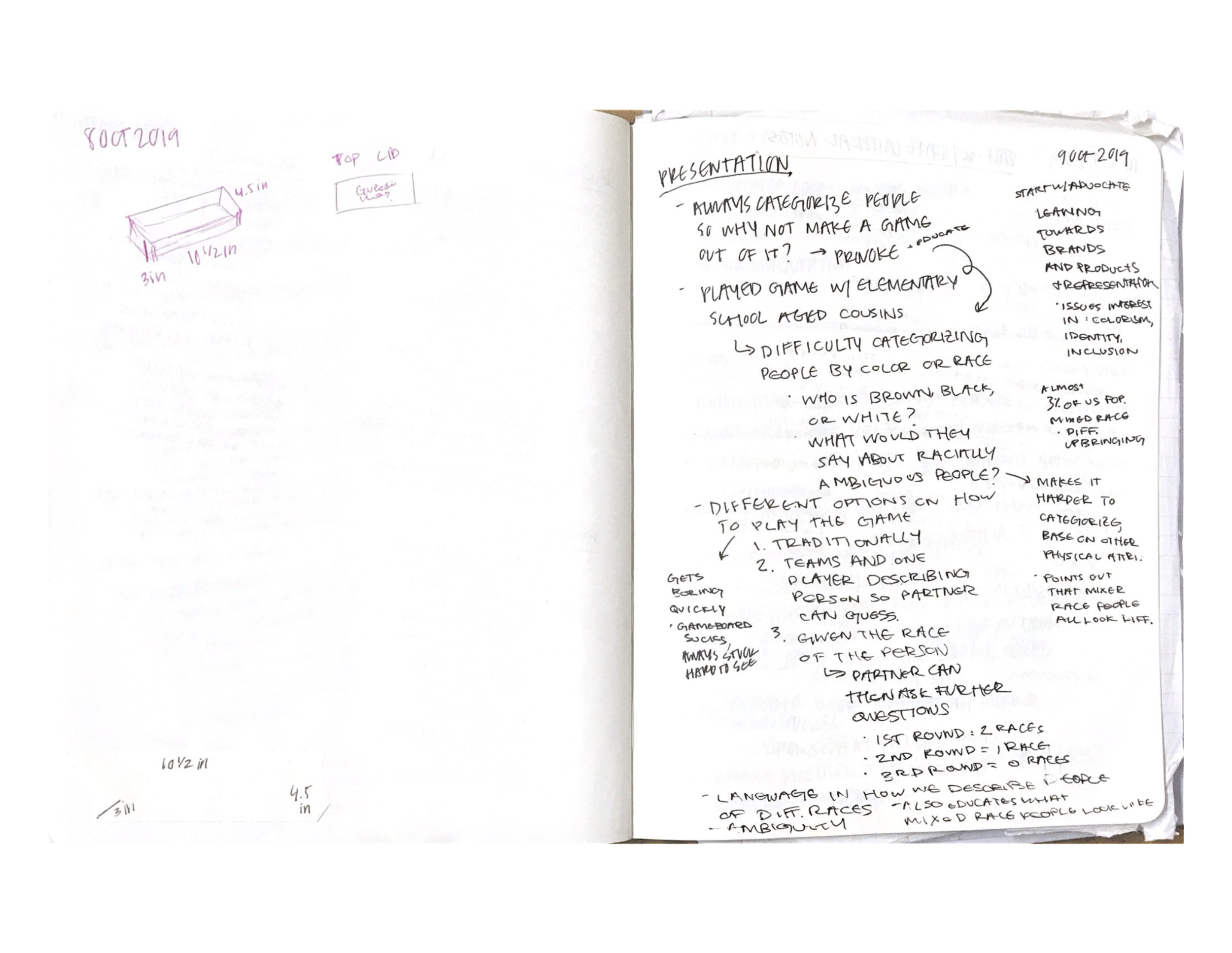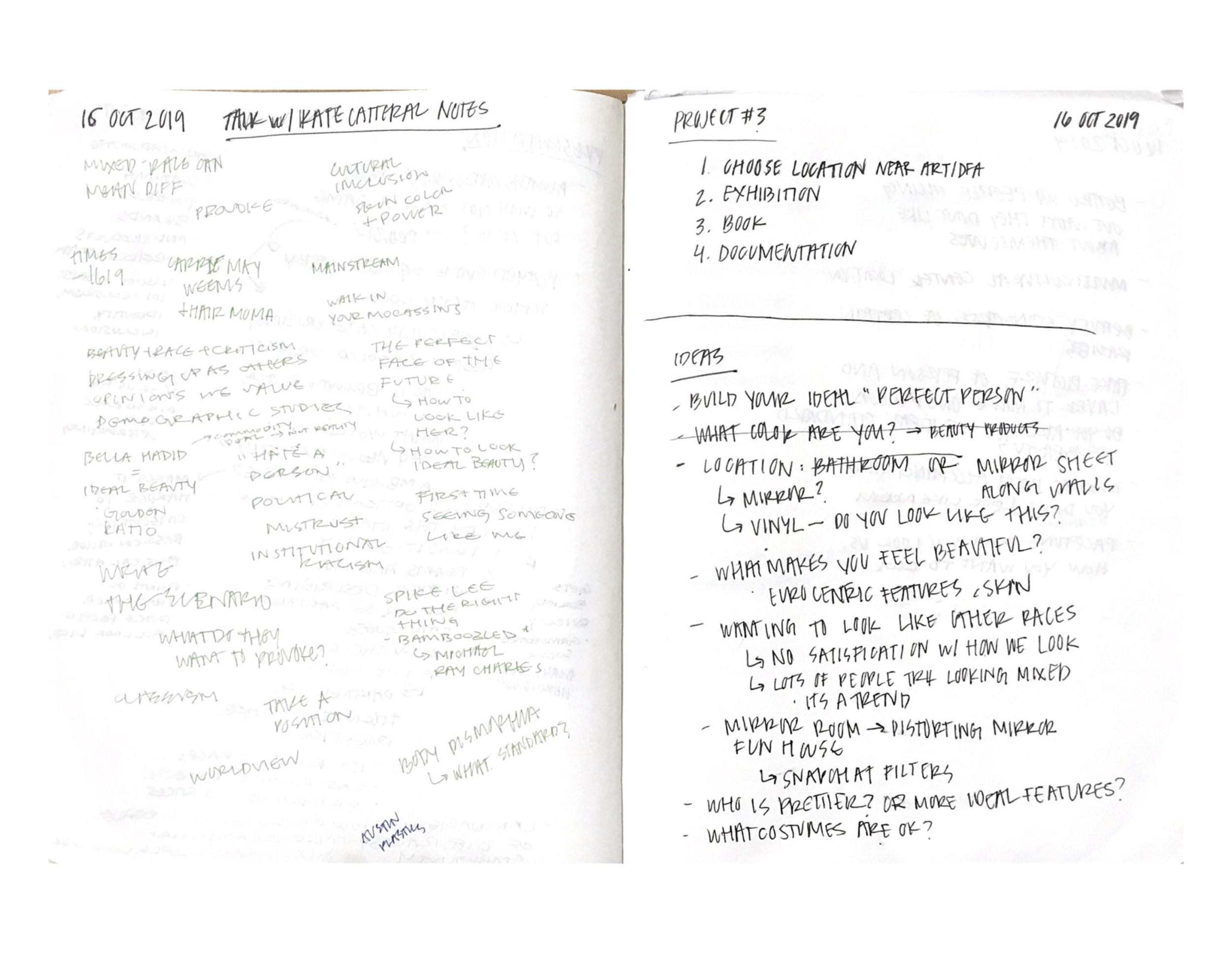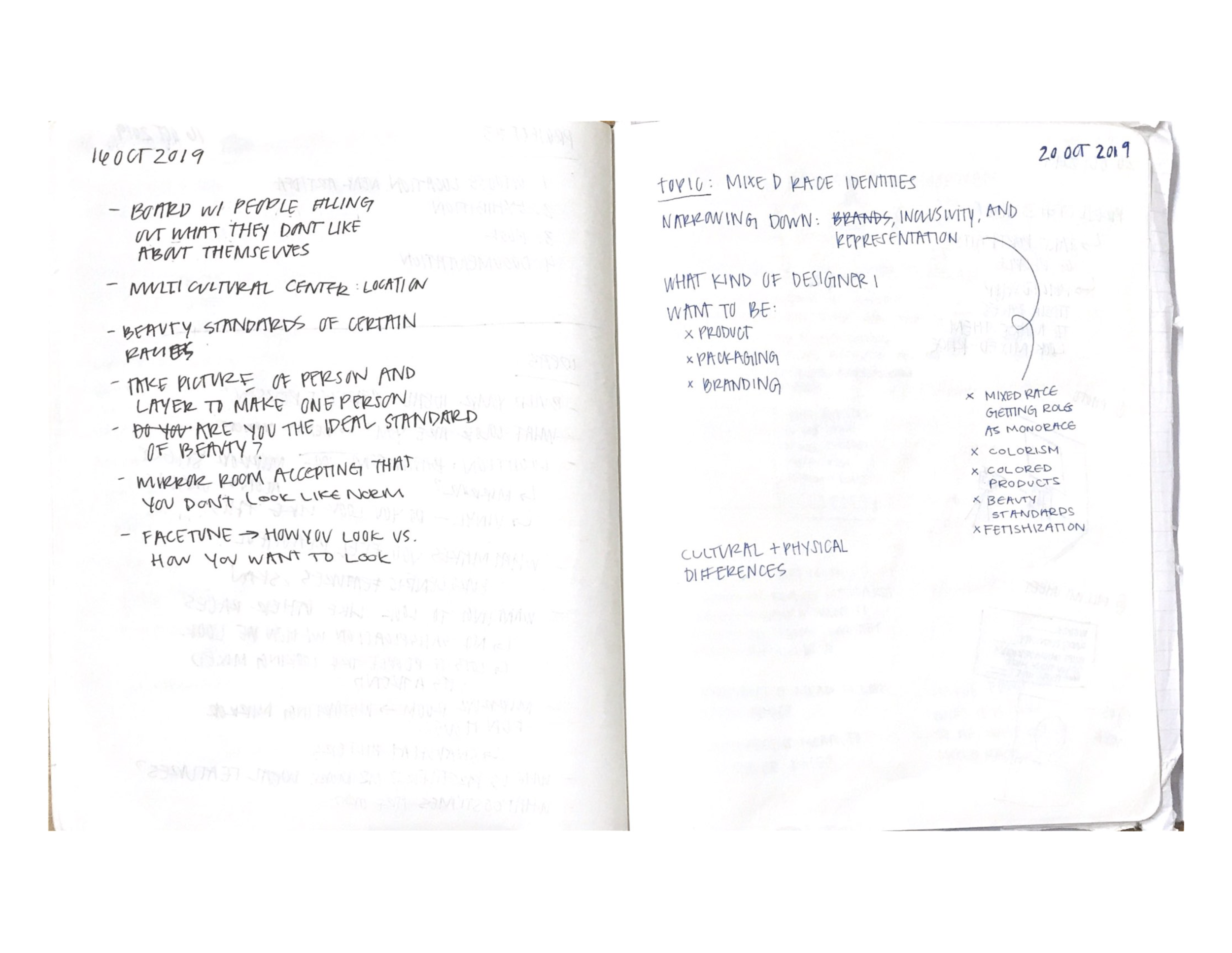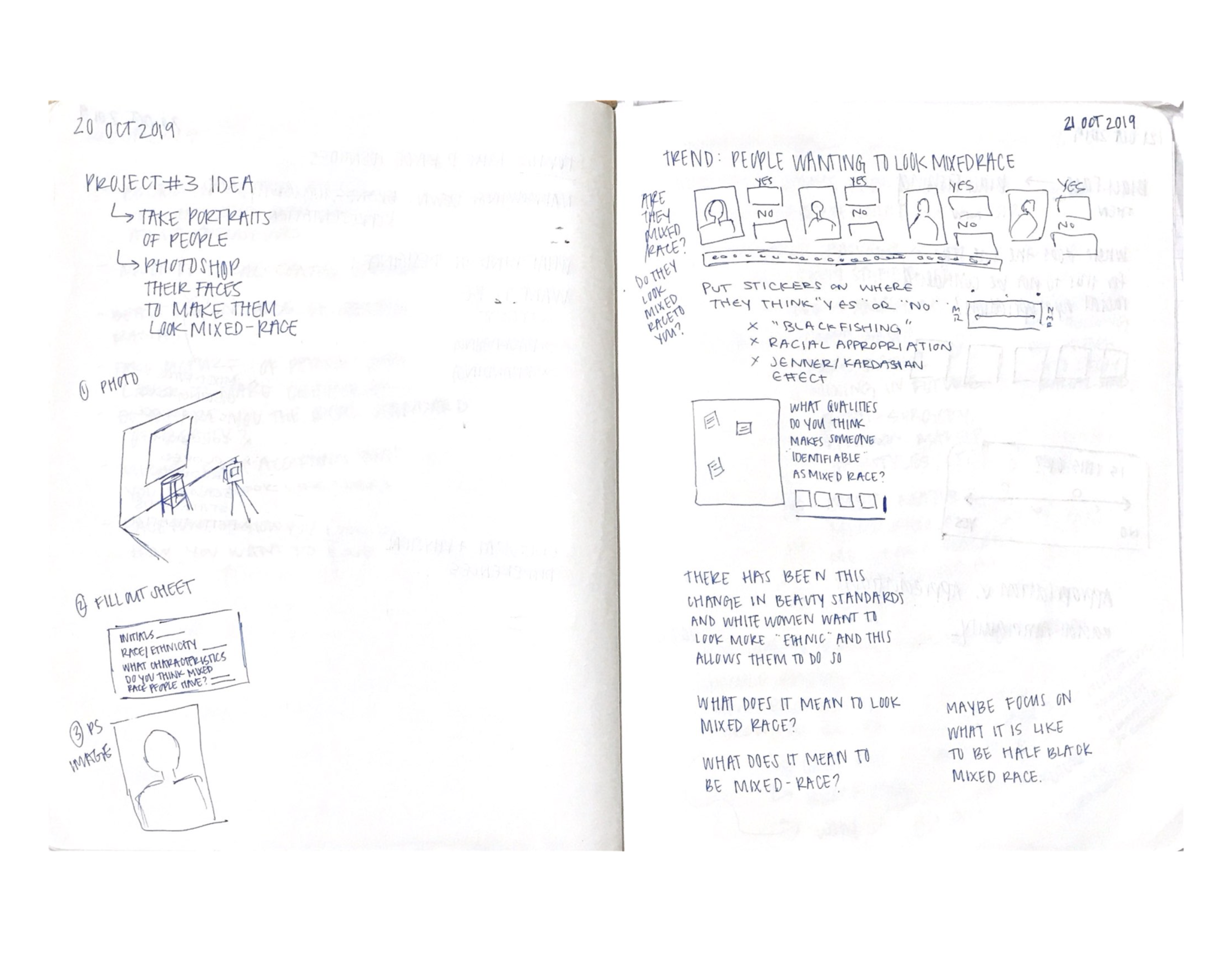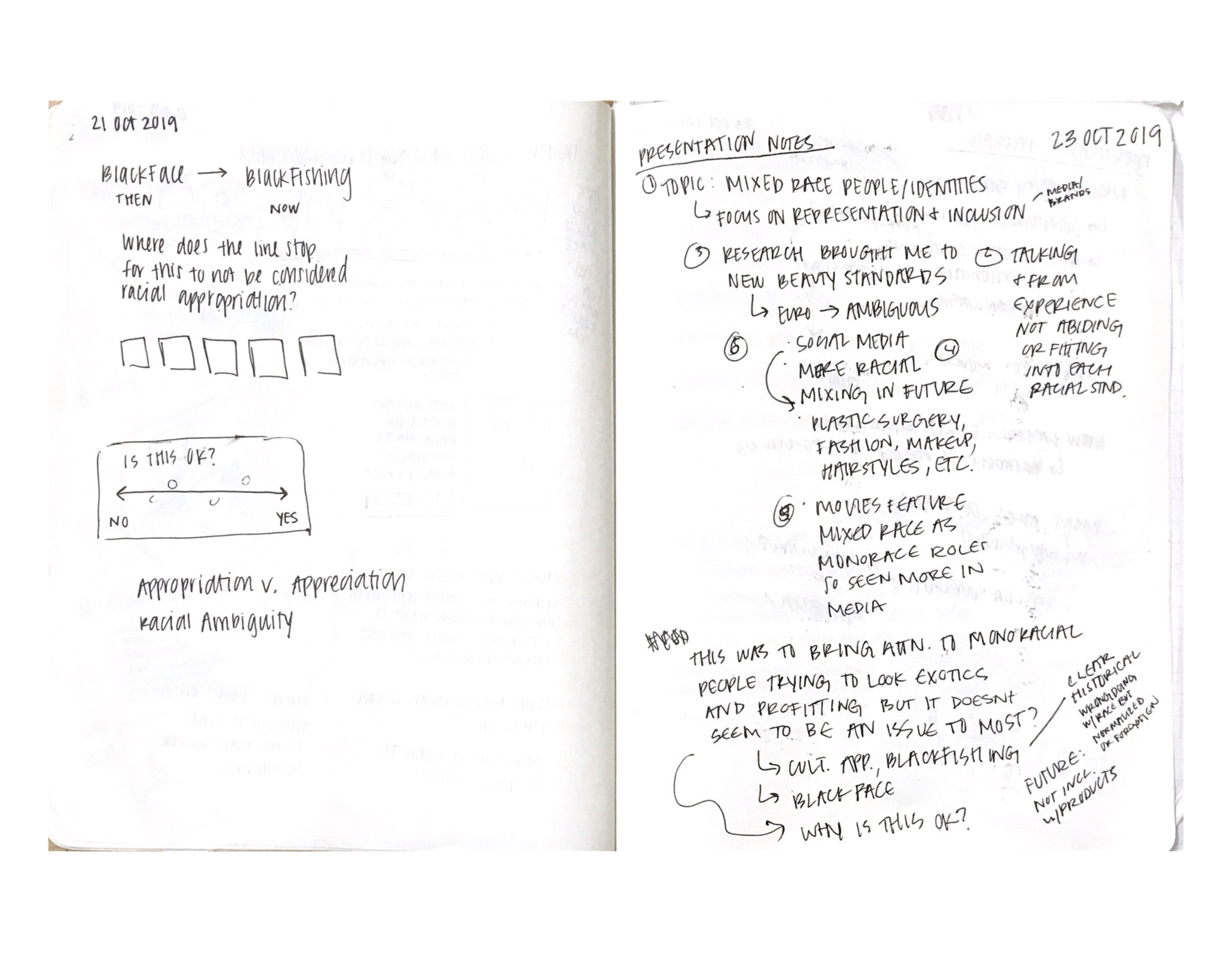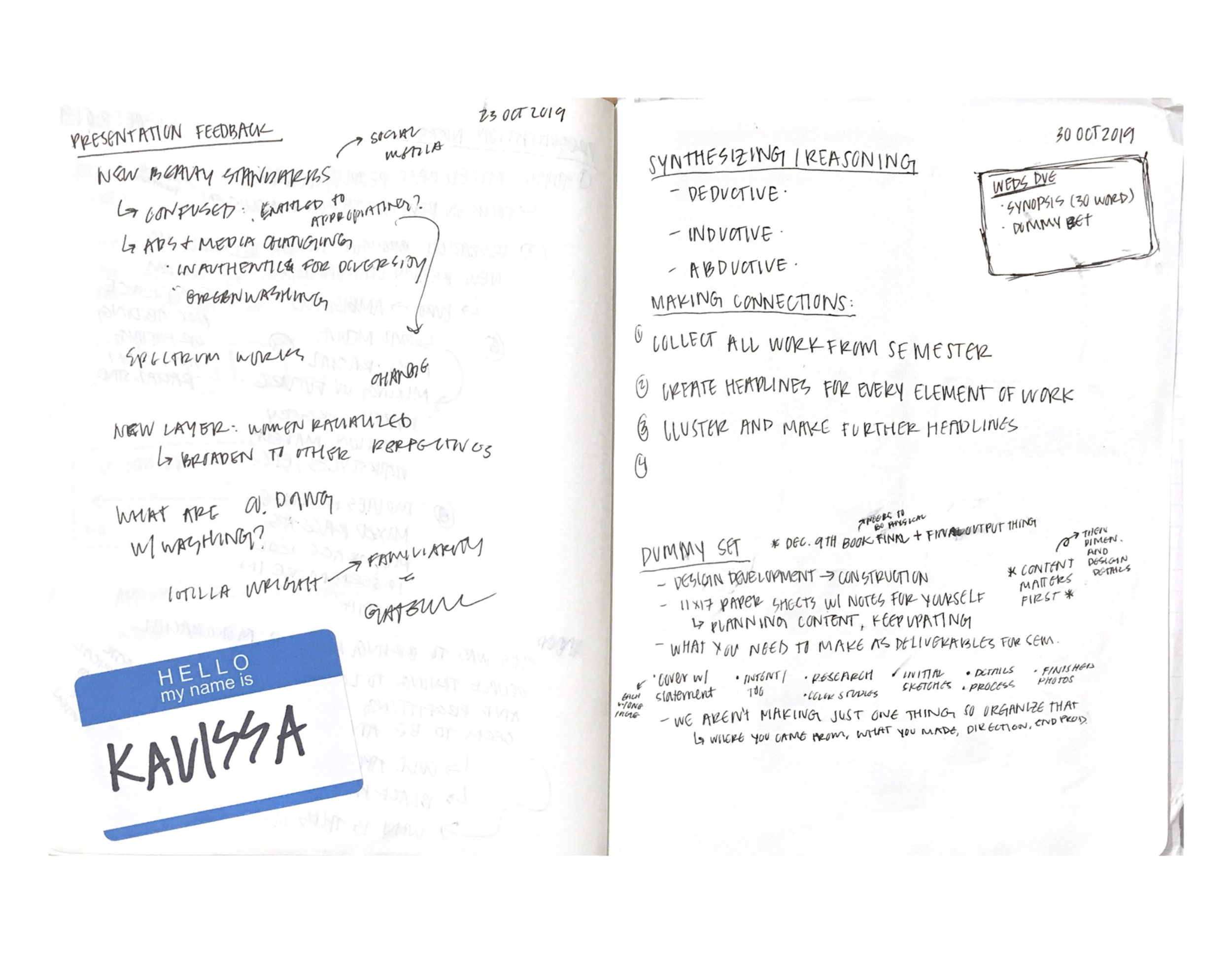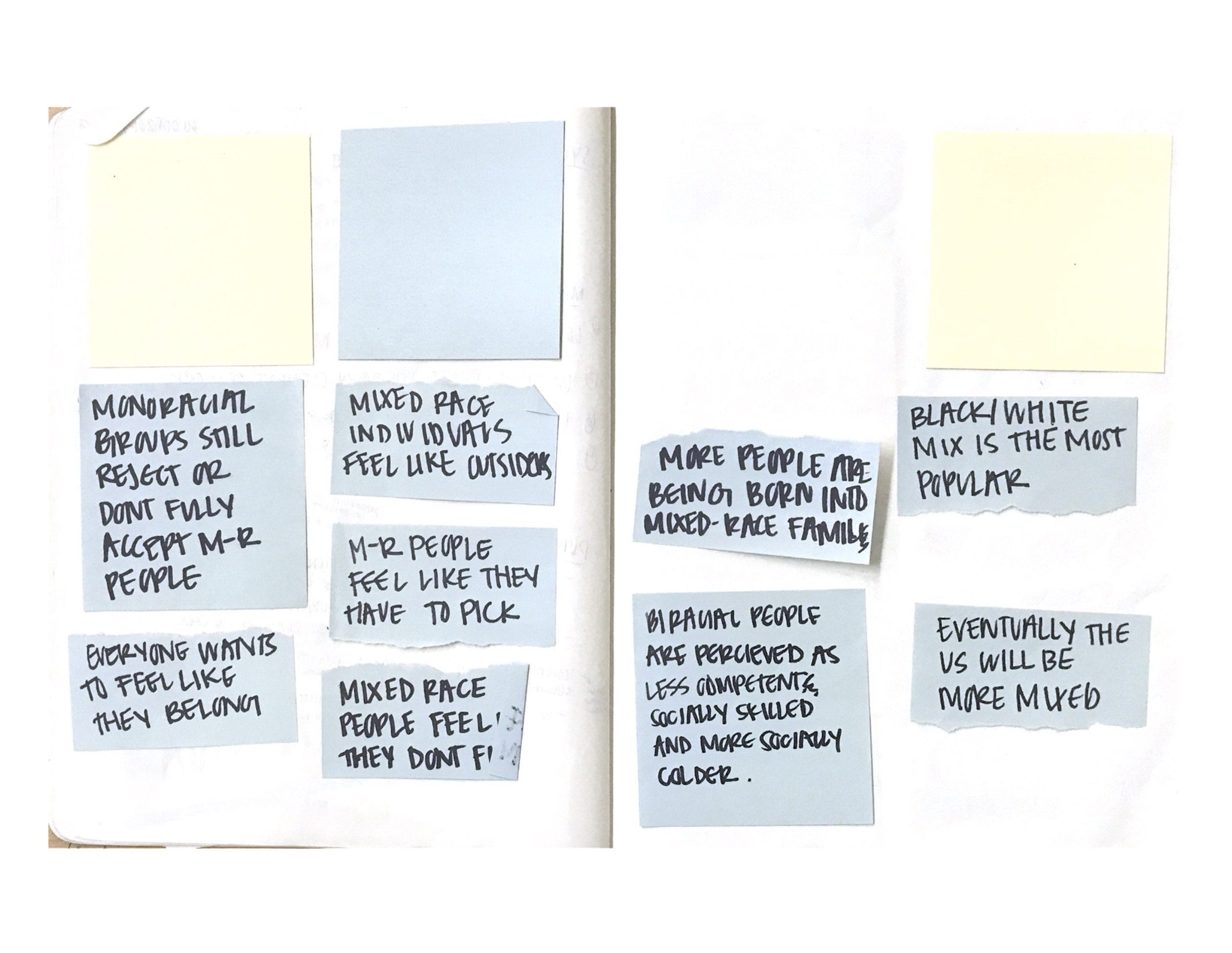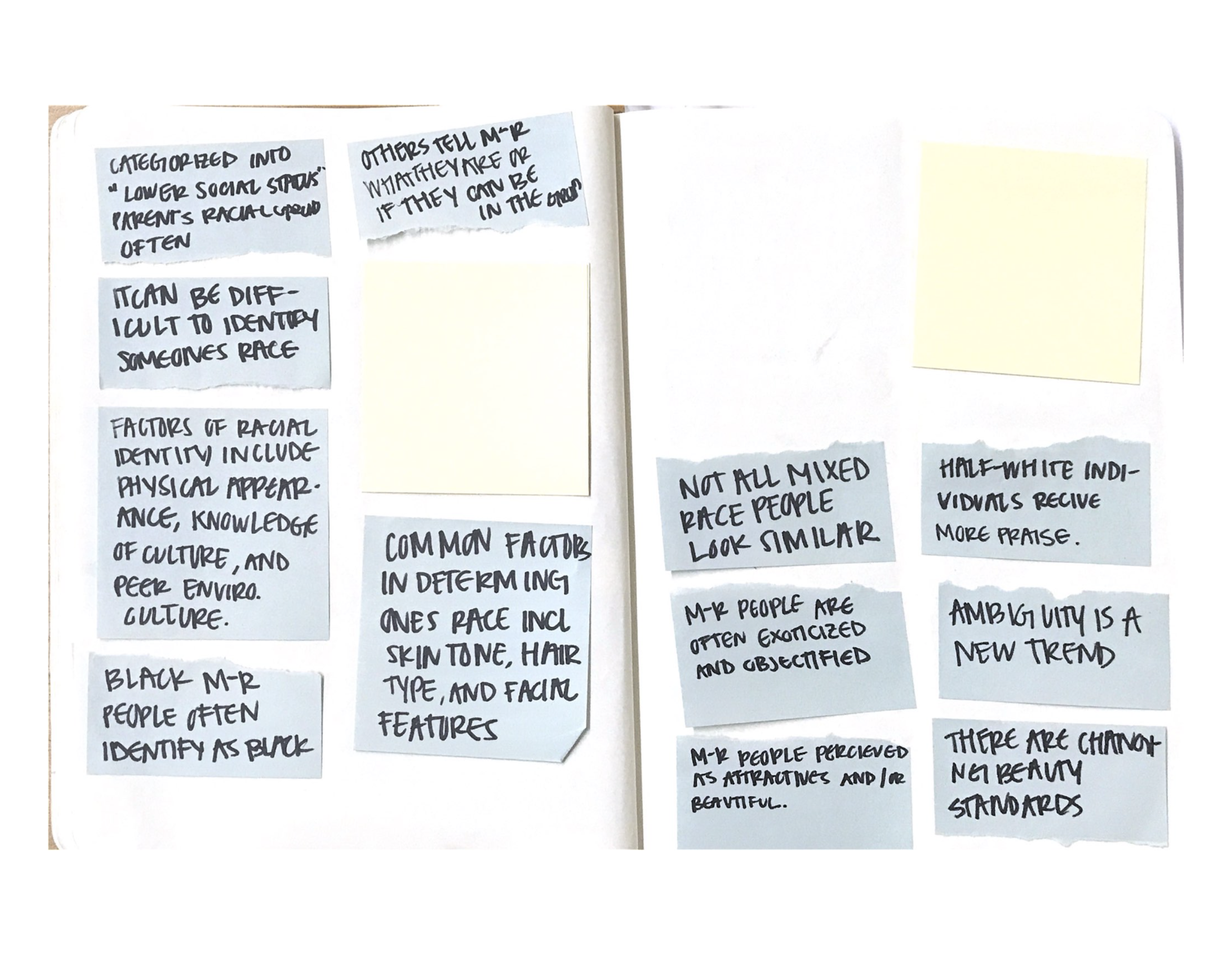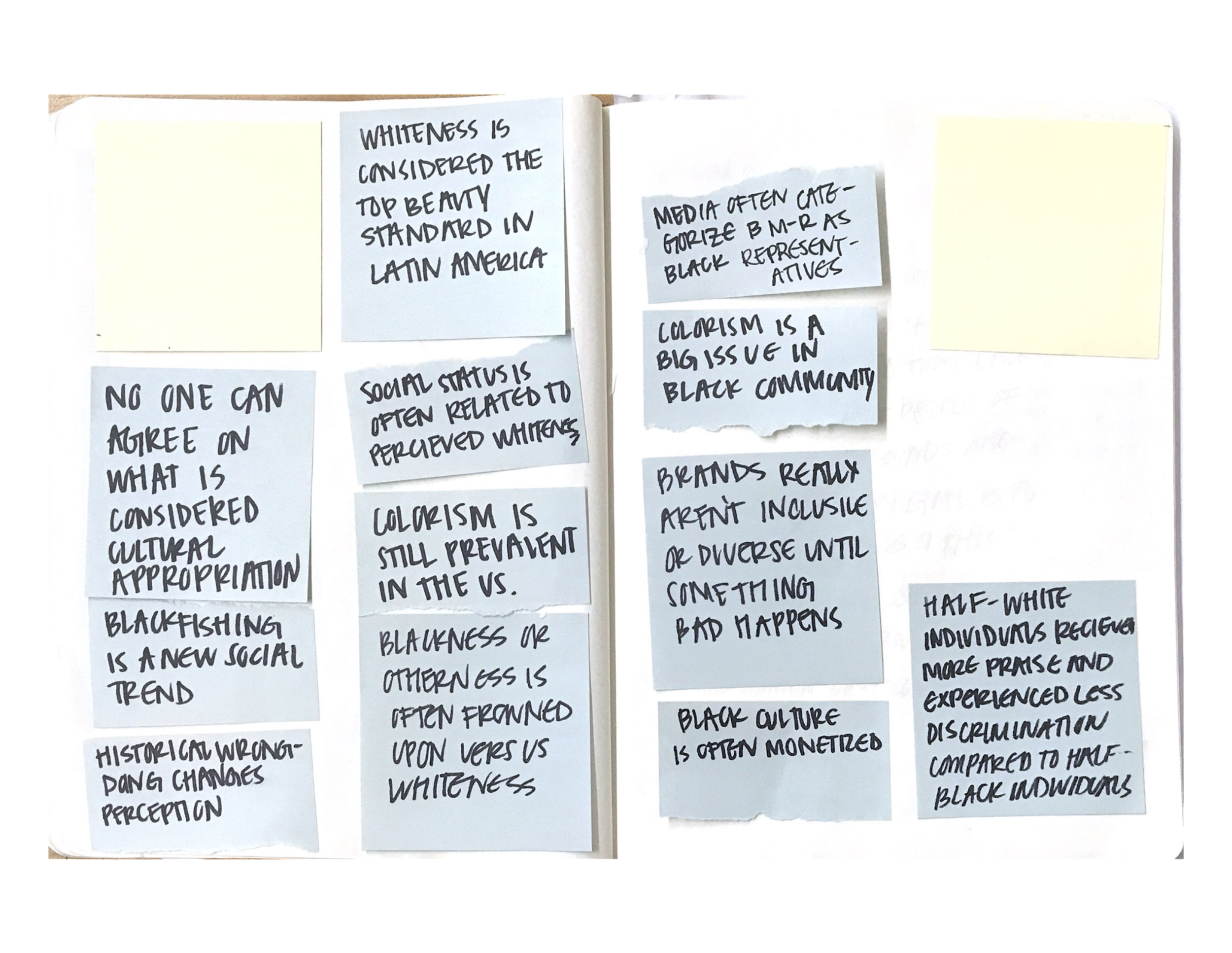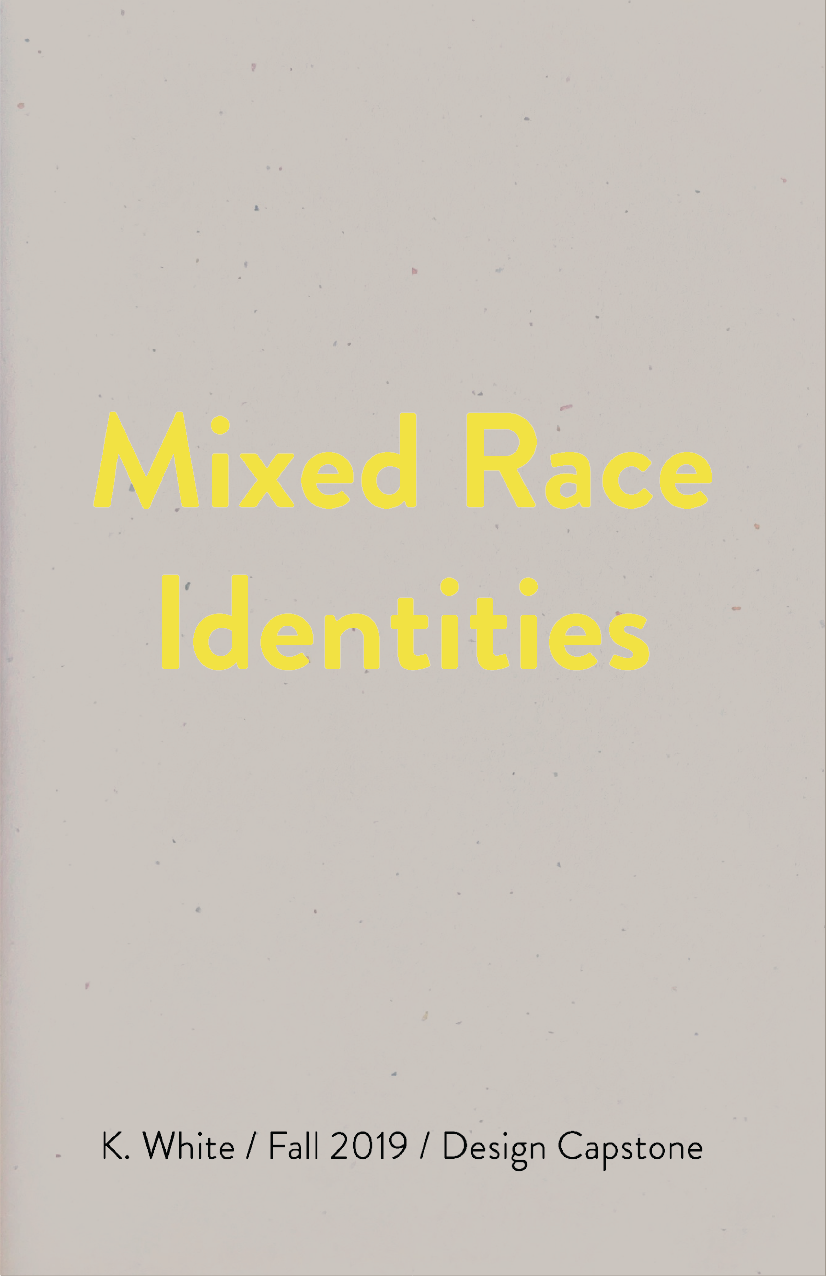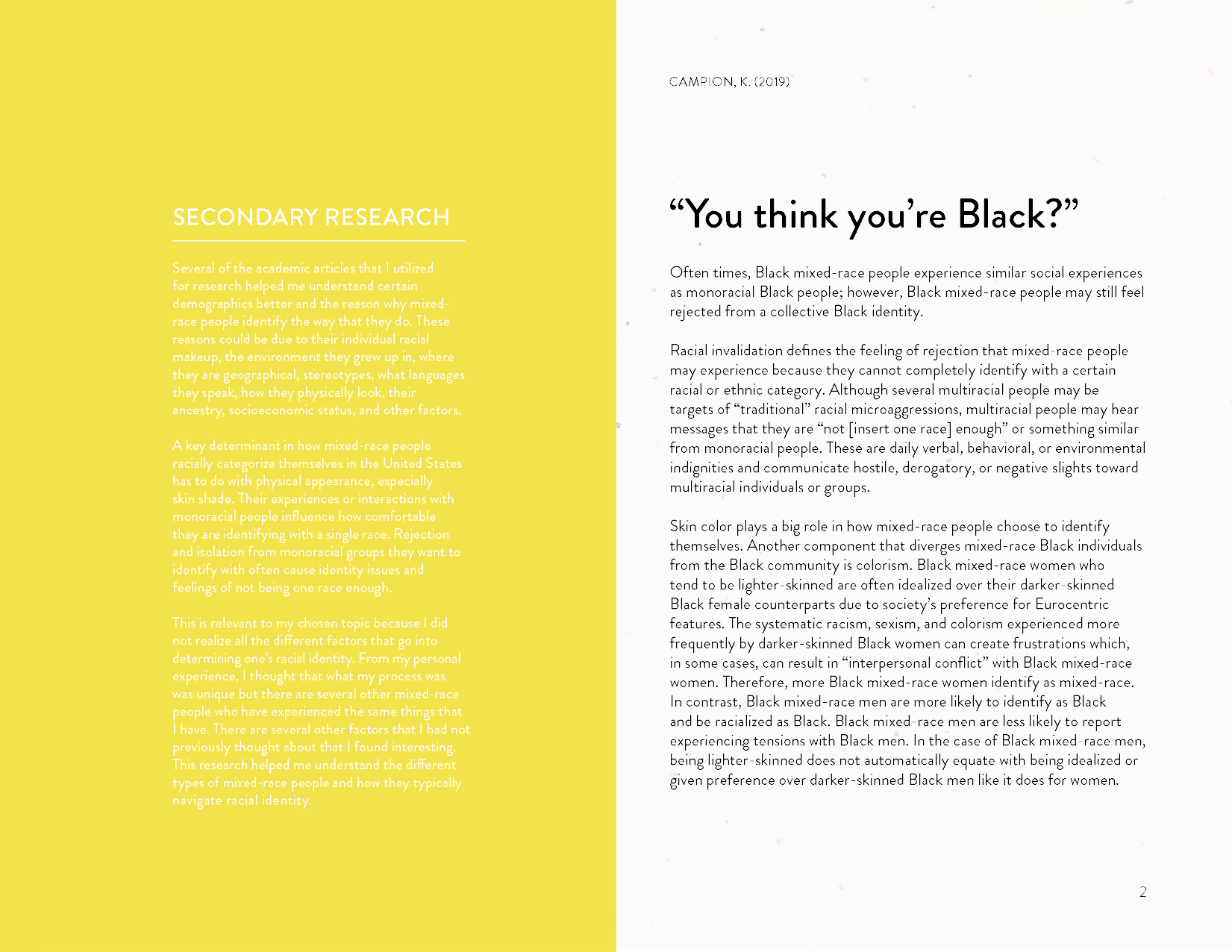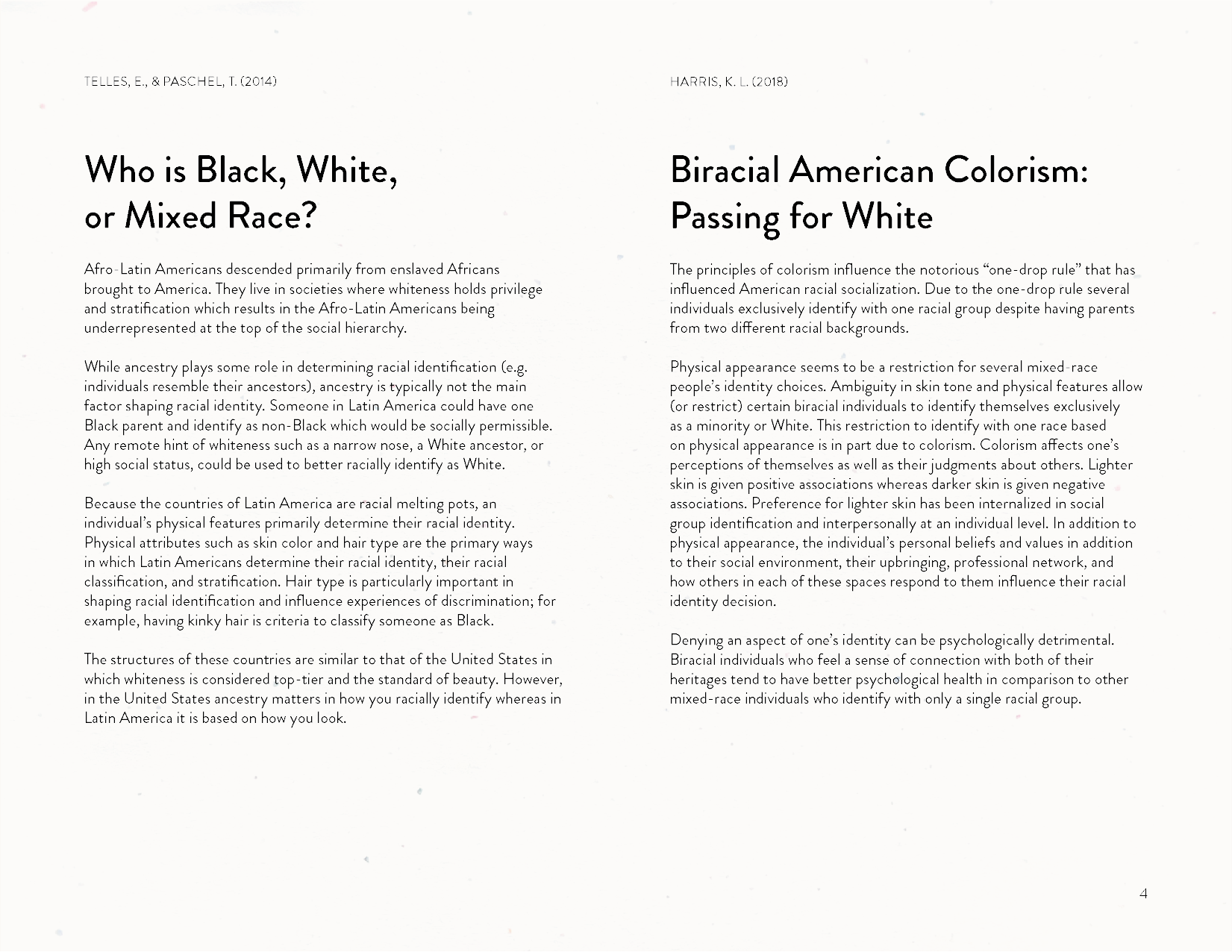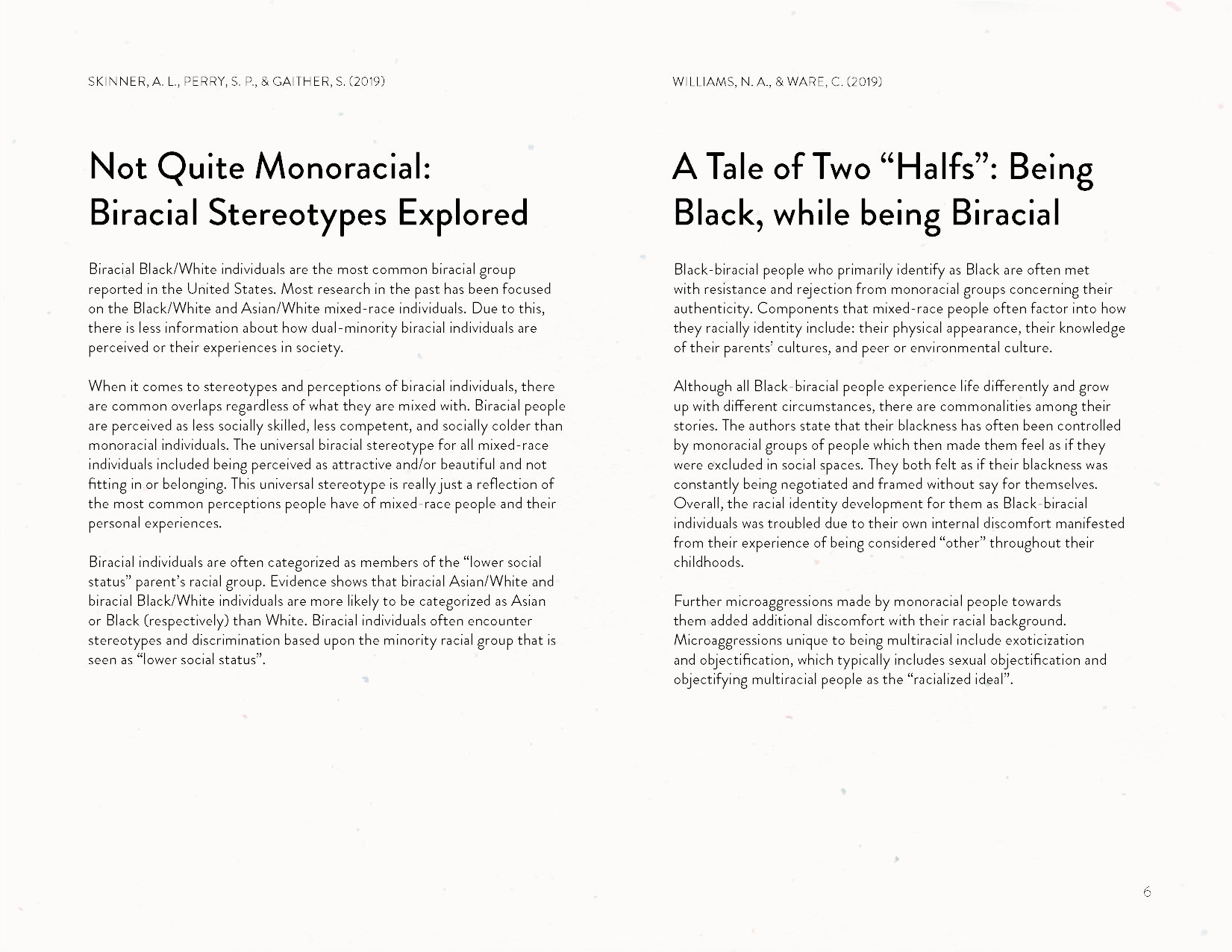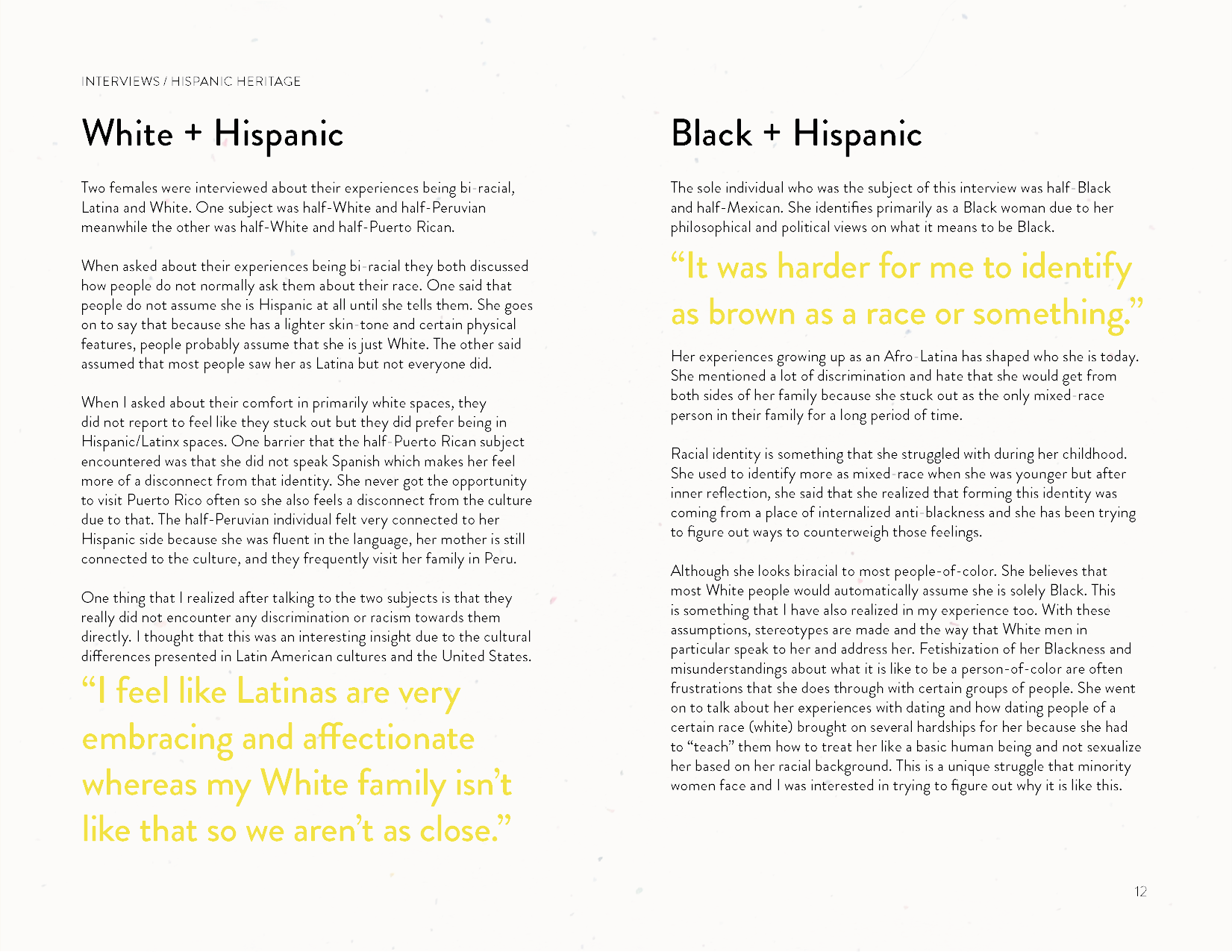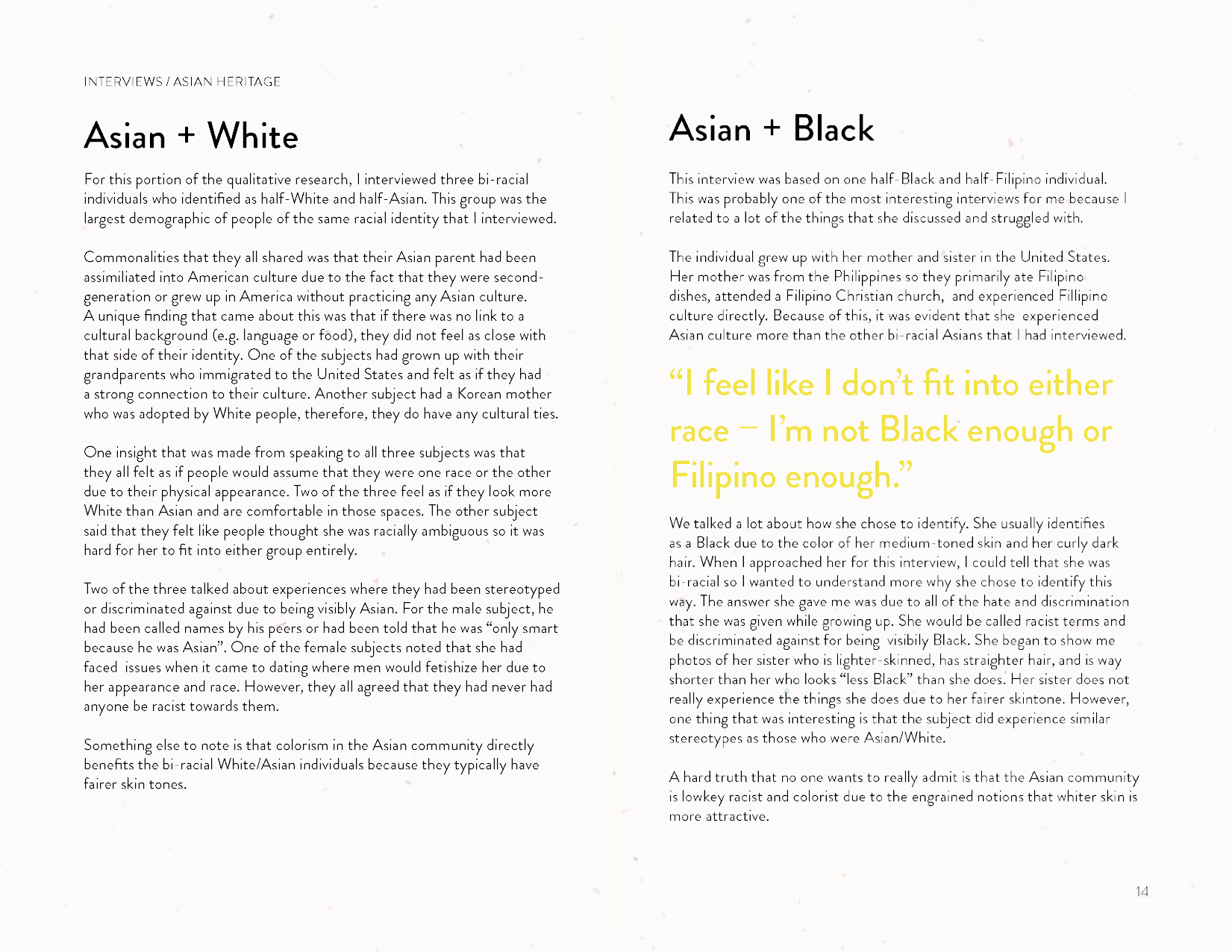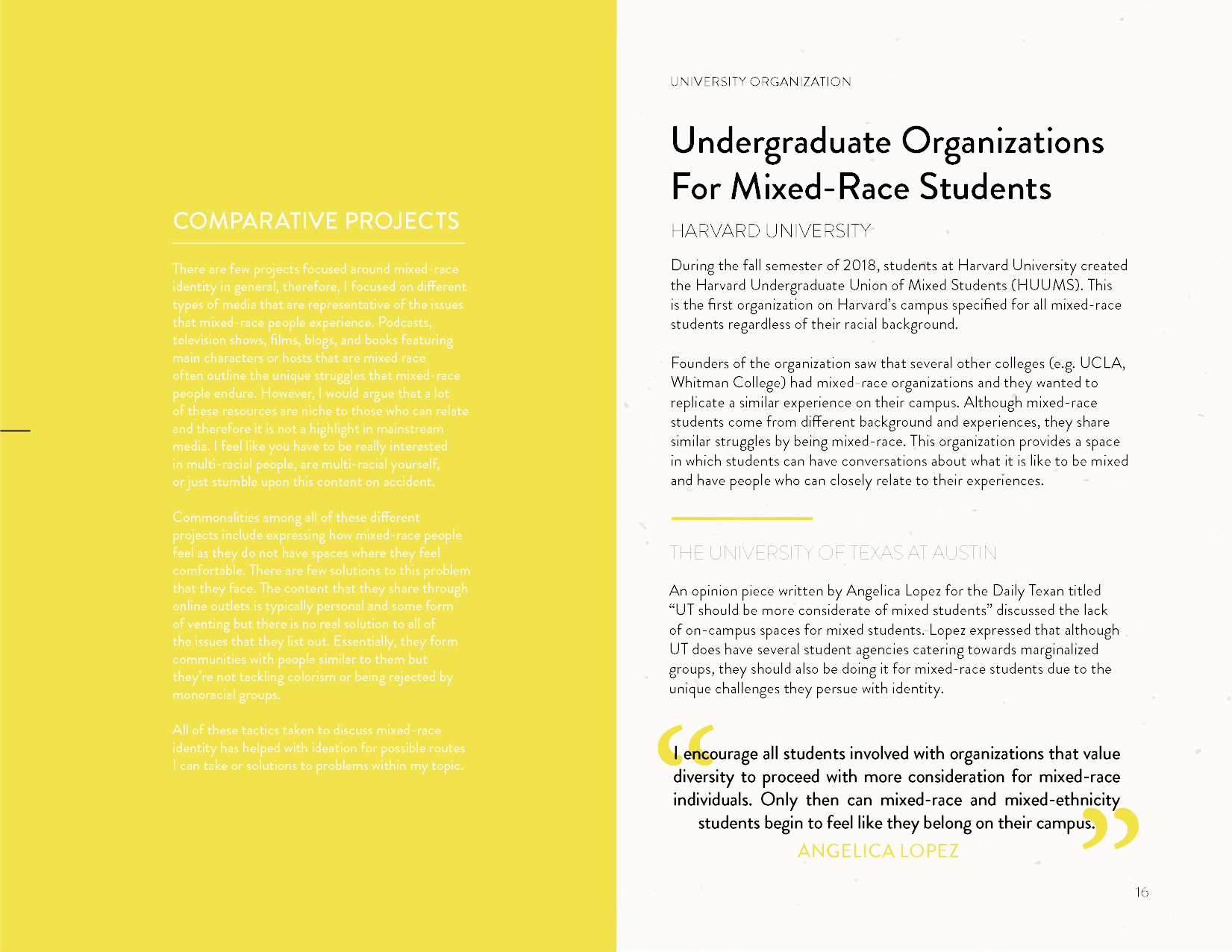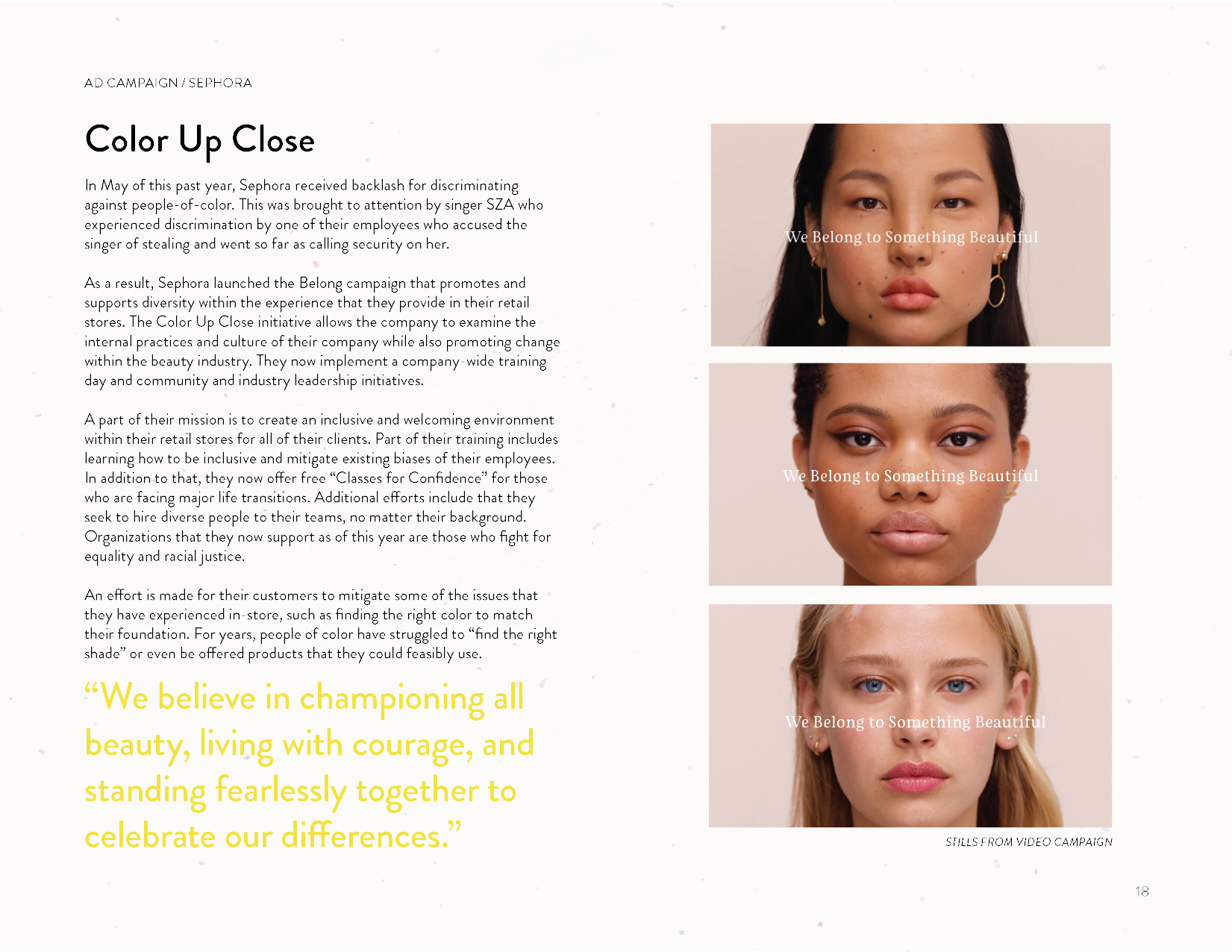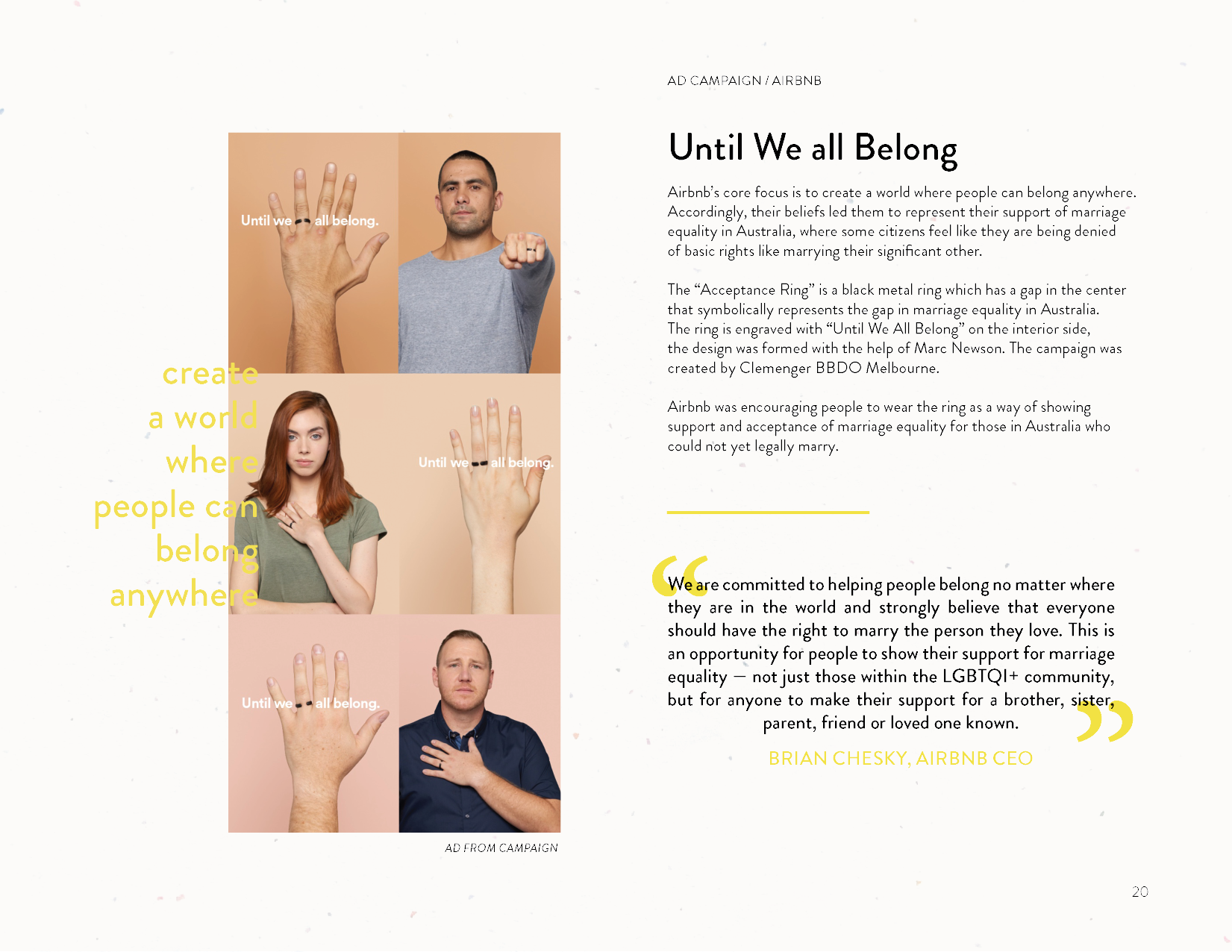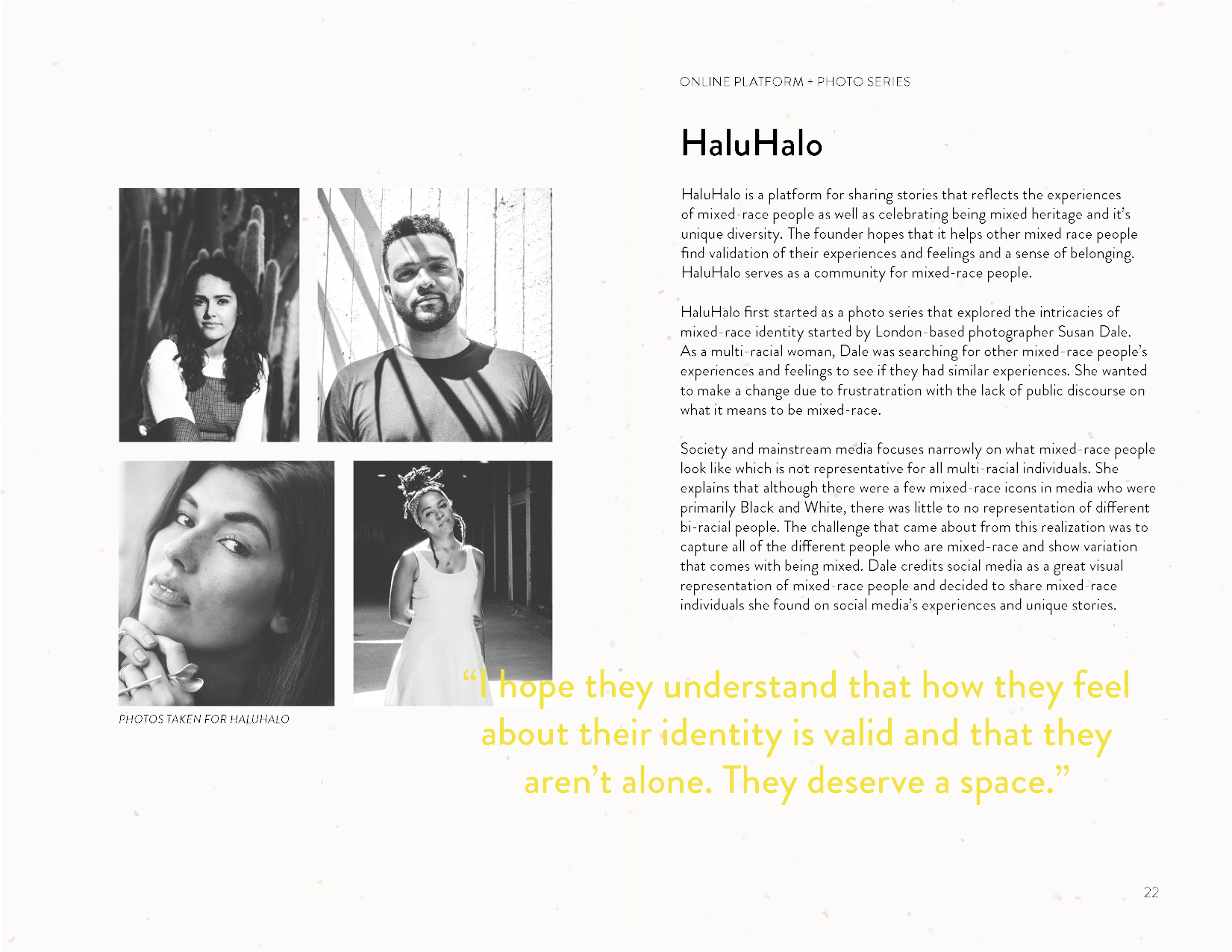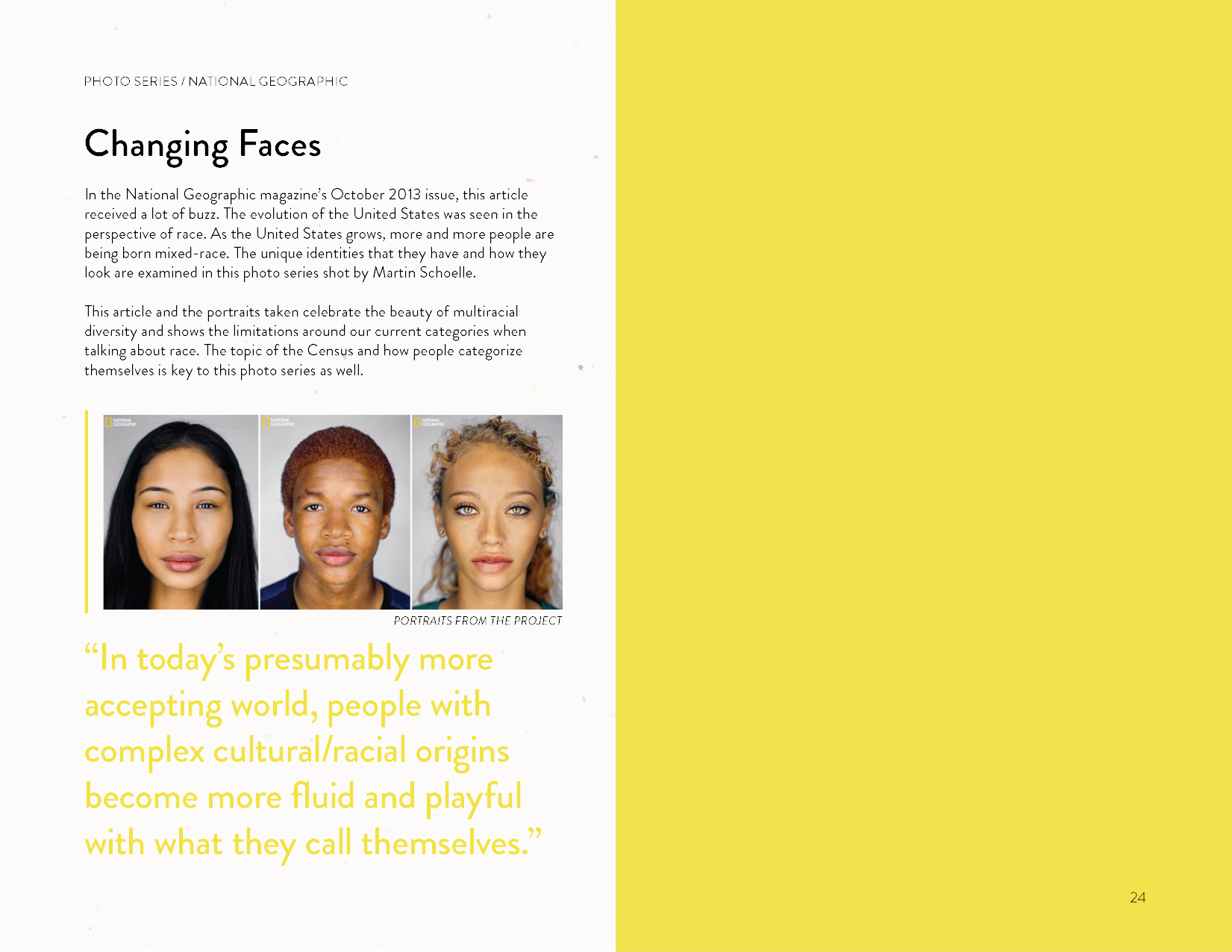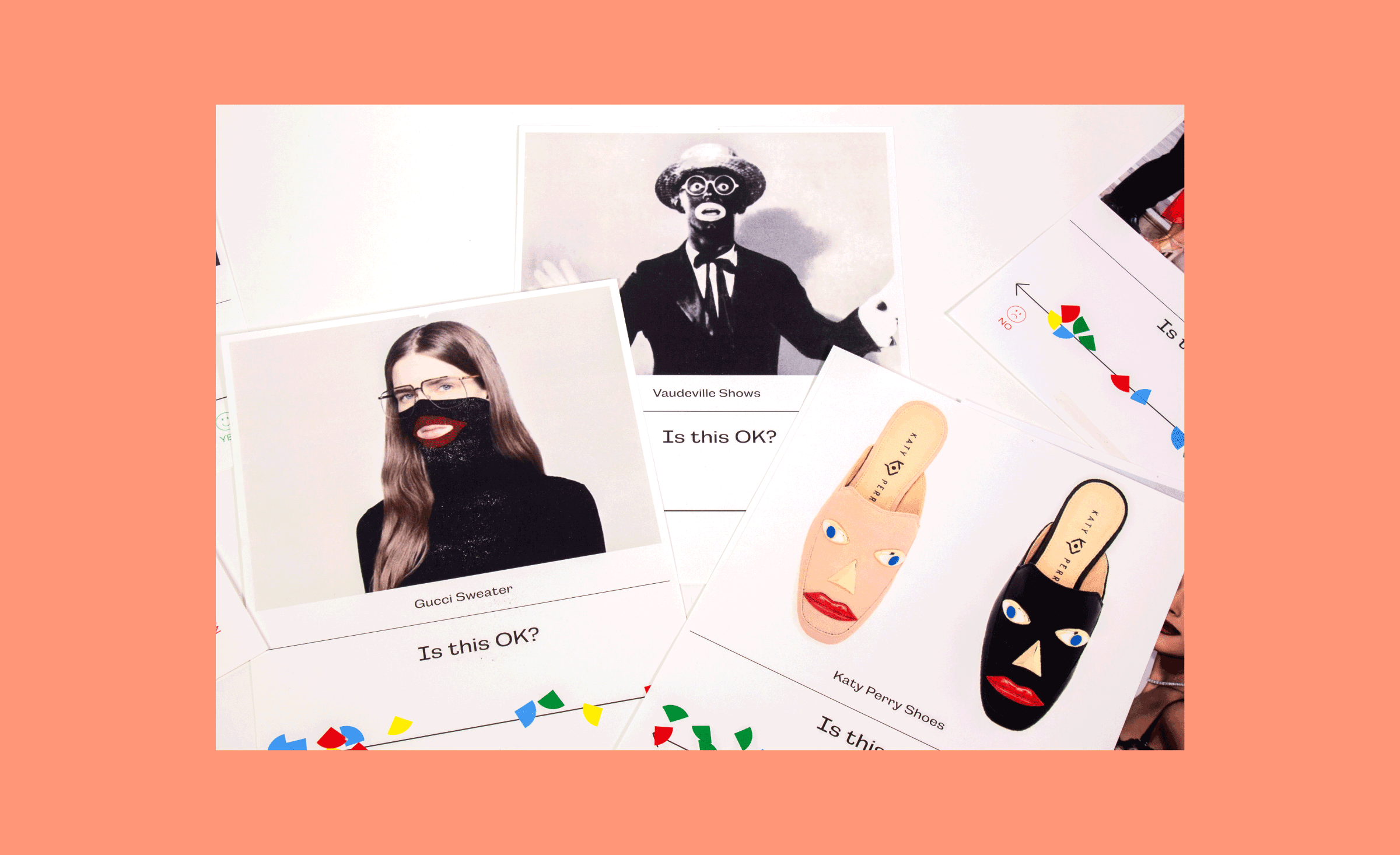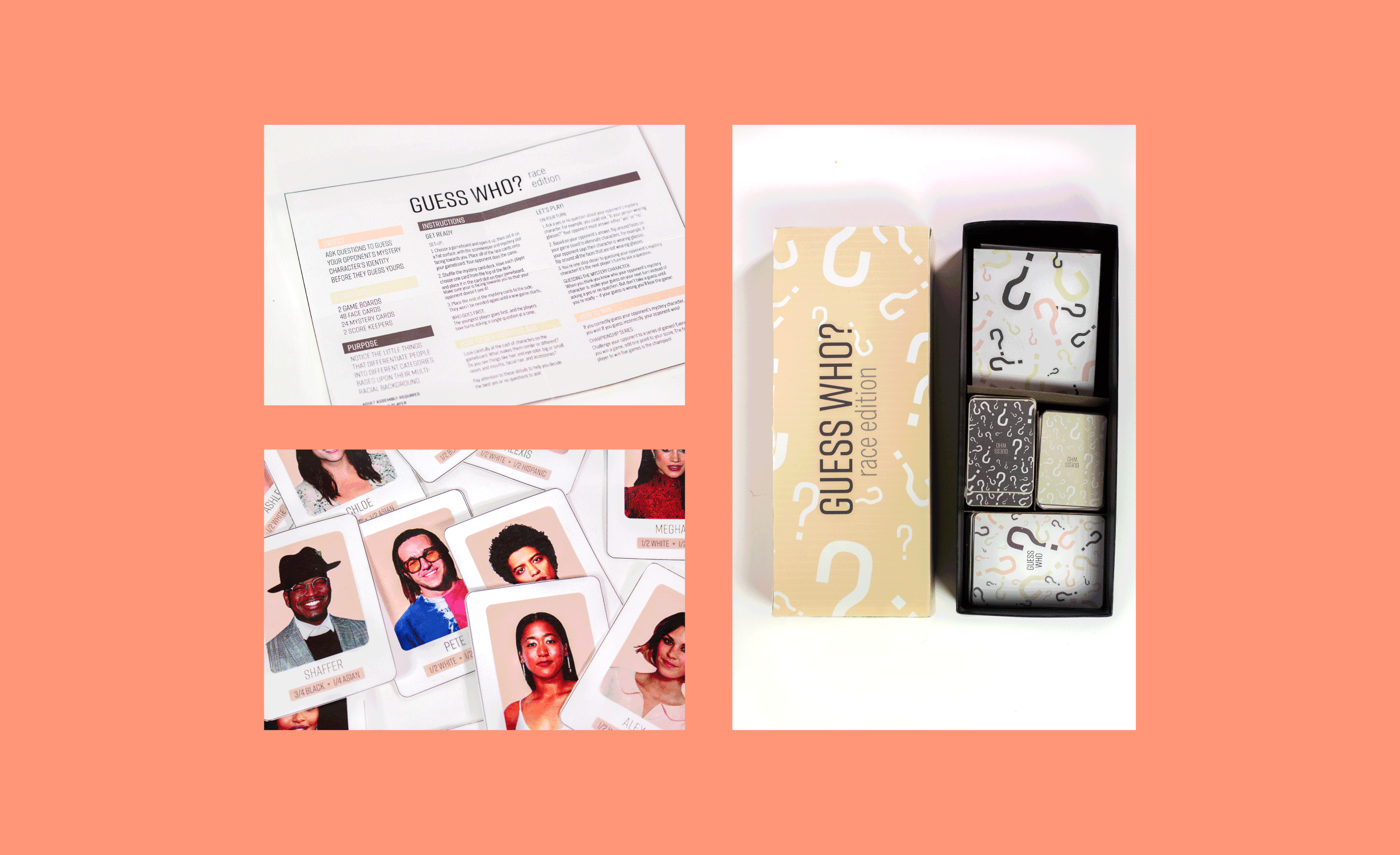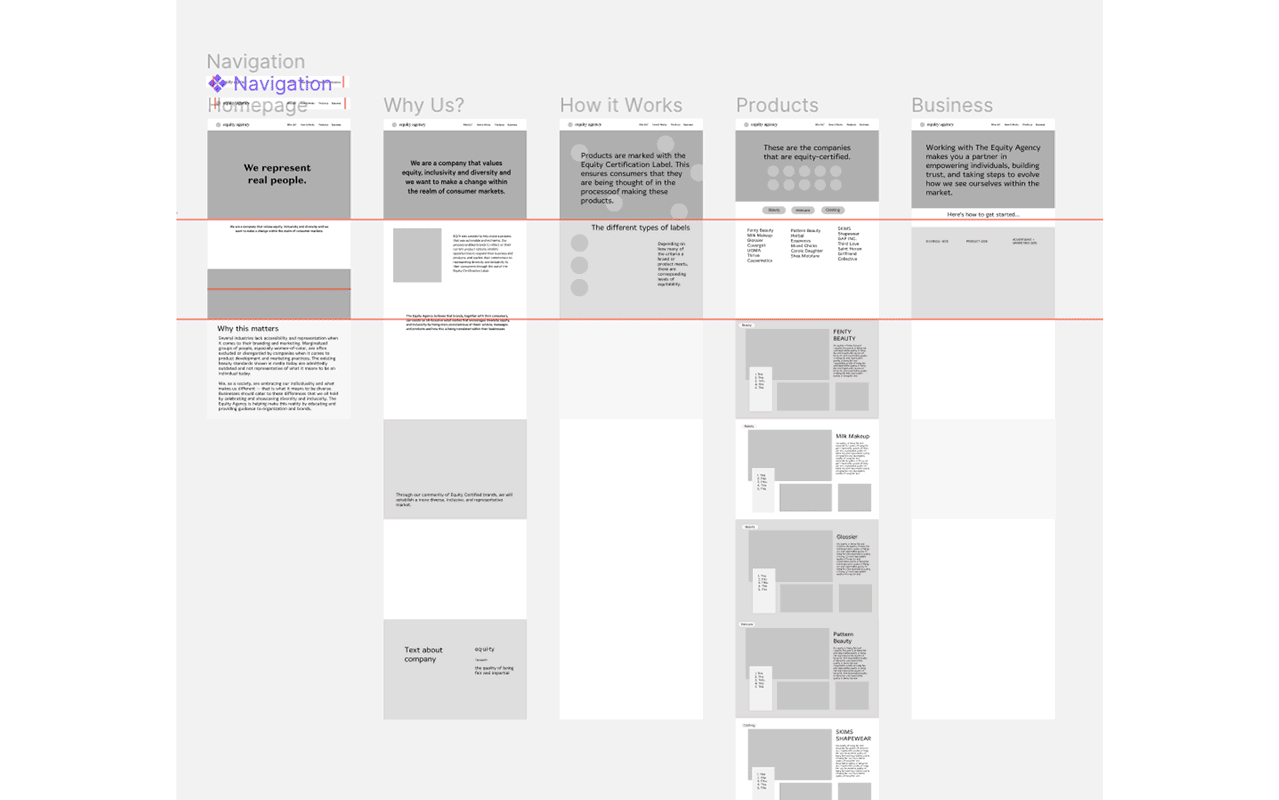Equity Agency is a company which serves as an outlet to voice frustrations with the beauty industry’s lack of inclusivity.
We will not compromise anymore.
Representation of those with diverse skin tones will increase and consumers will be able to find a product that was made with them in mind.
We urge companies to make this effort to not only enhance consumer relationships with their brand but to also encourage a change within society.
Research + Process
Through research and several minor projects, I sought to understand the issues that one may experience as a mixed-race individual. The journey led me to explore topics of identity, racism, cultural appropriation and colorism. This year-long project can be visualized through a series of interviews, photographs, sketches, notes, research, and iterative prototypes.
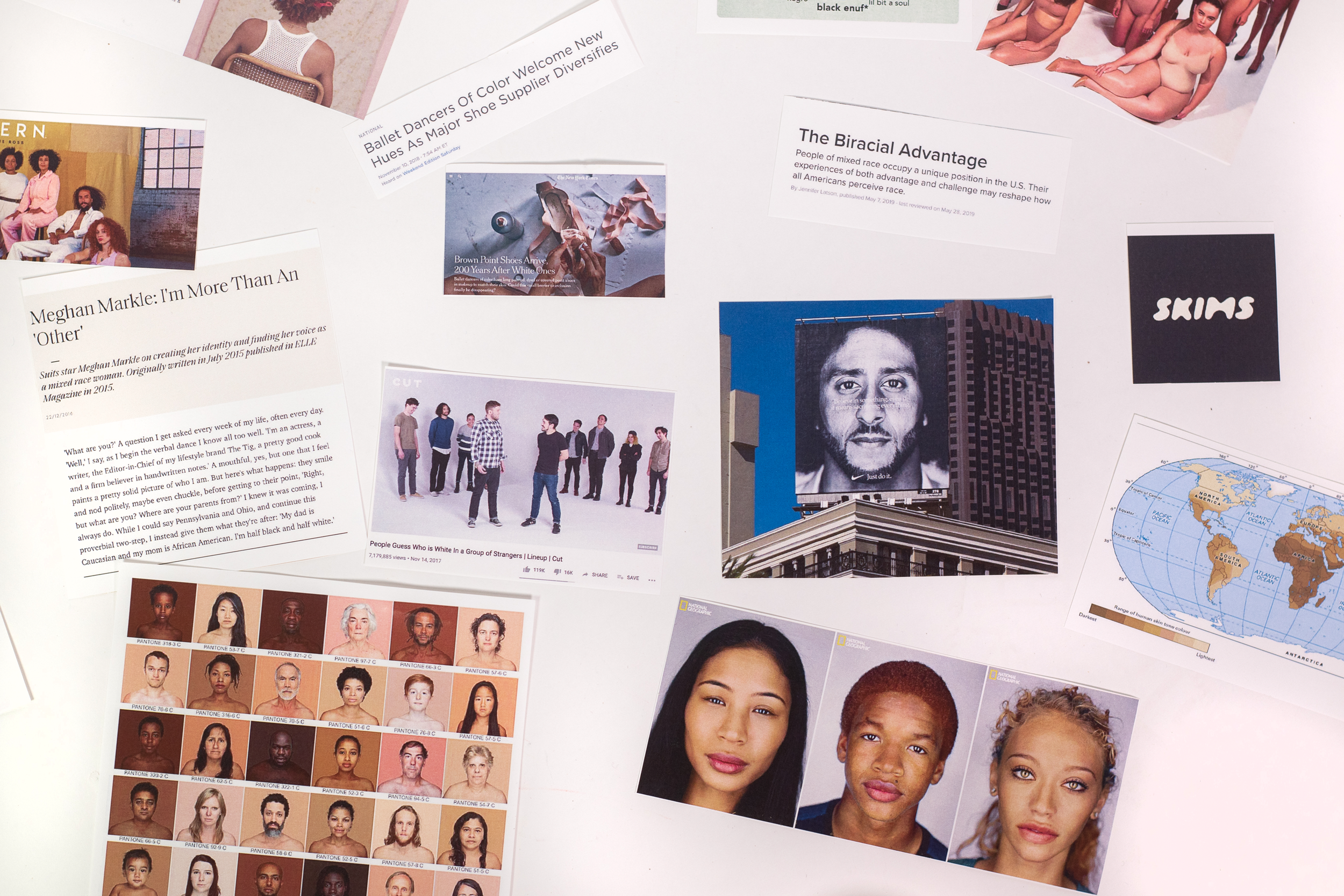
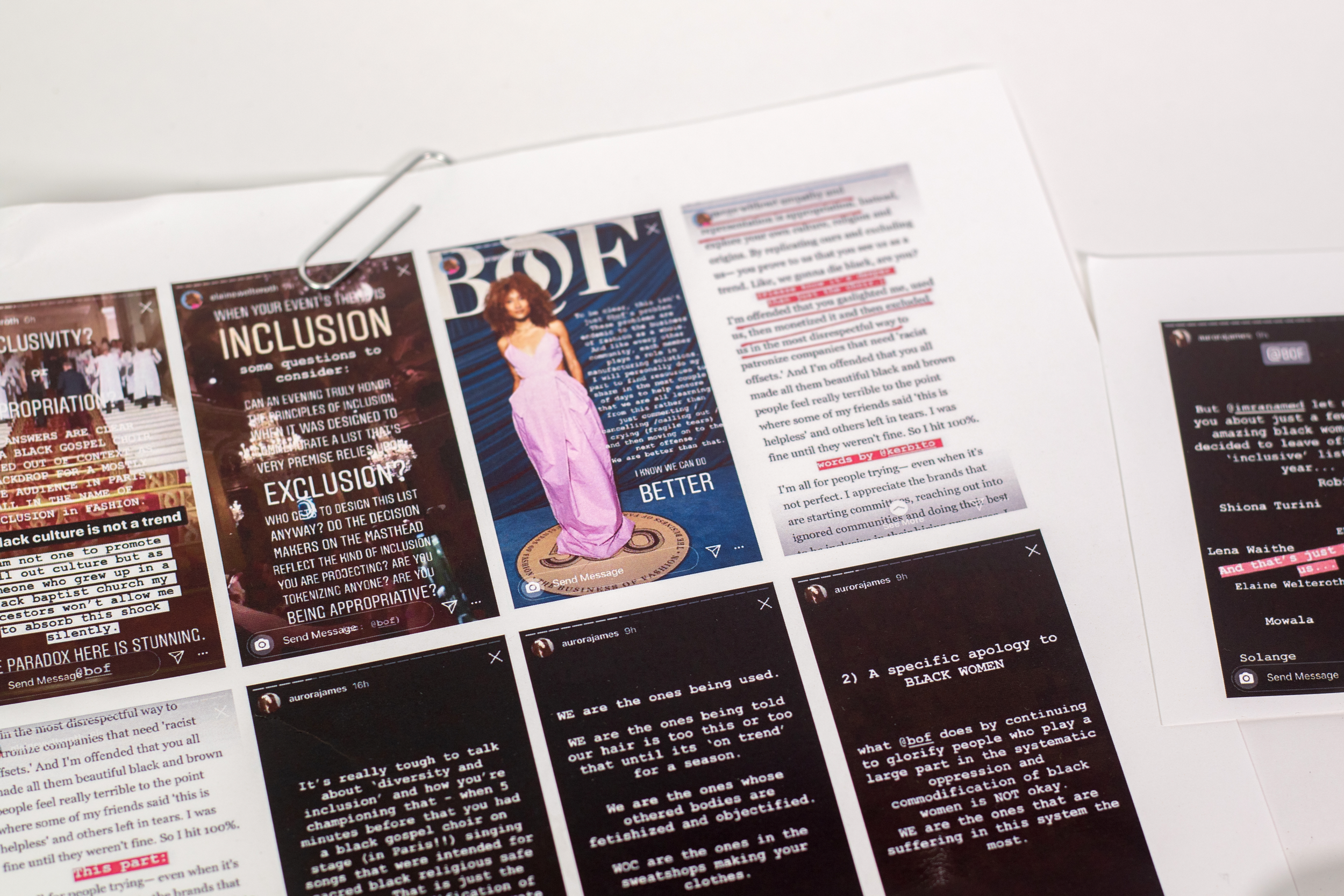
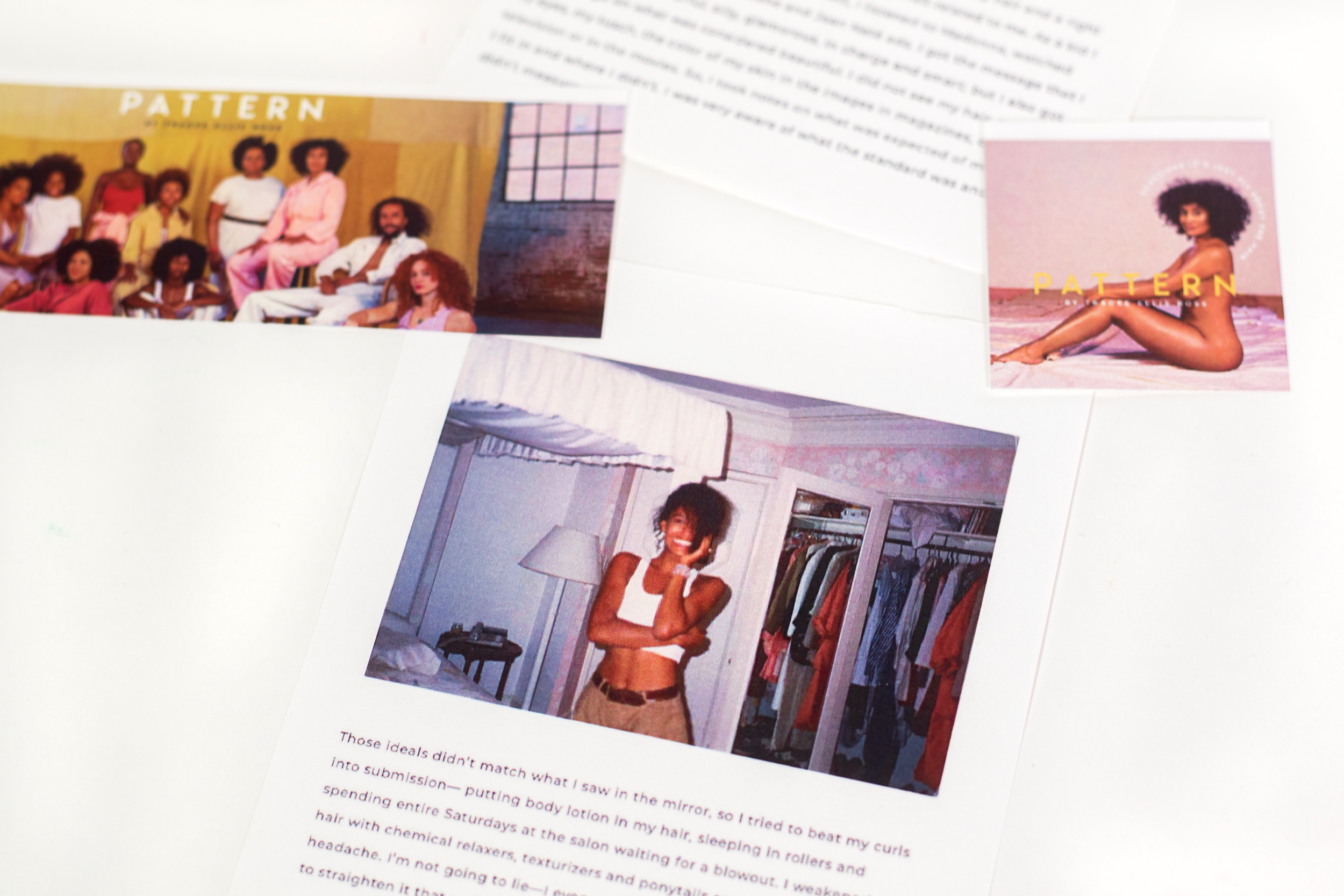
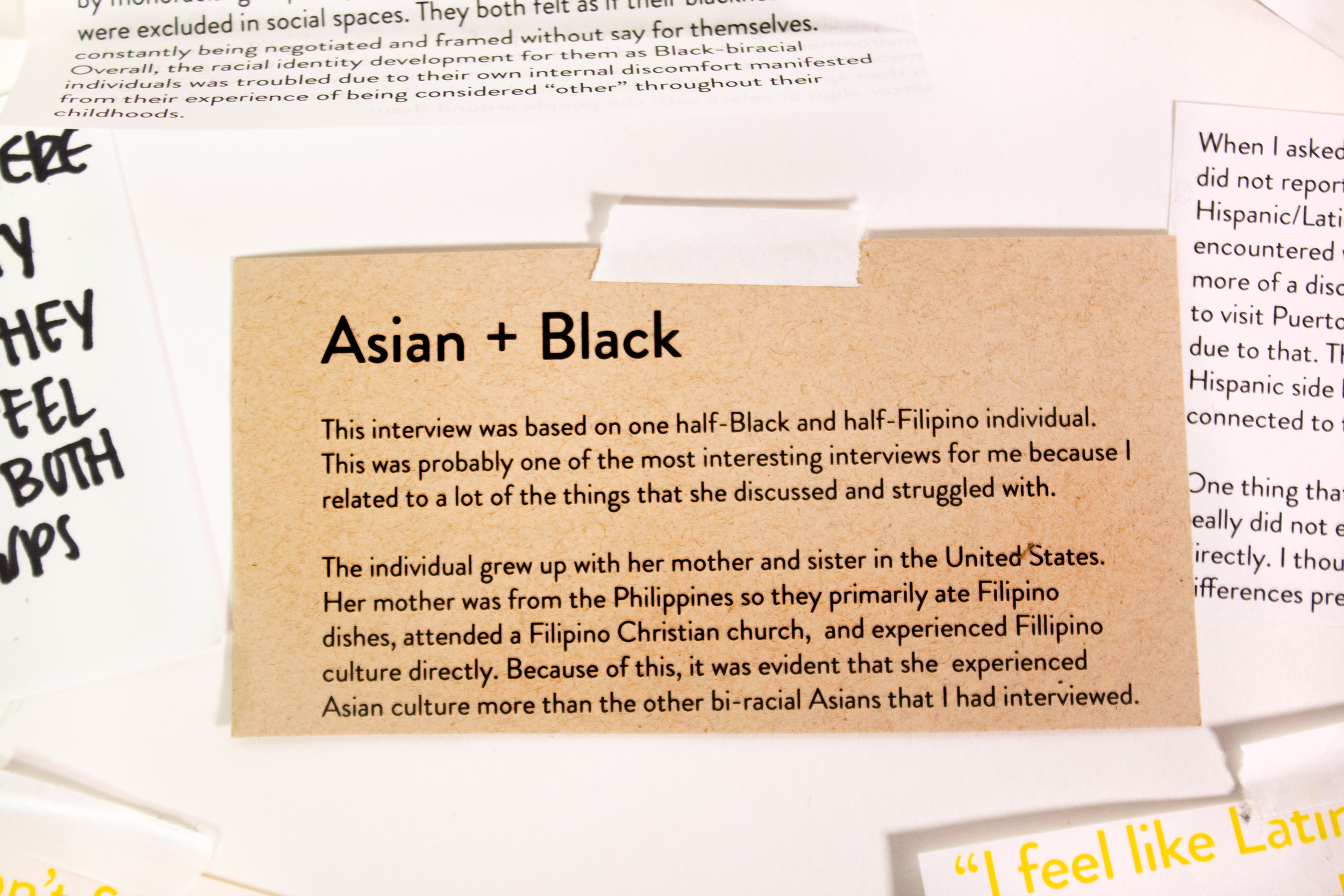
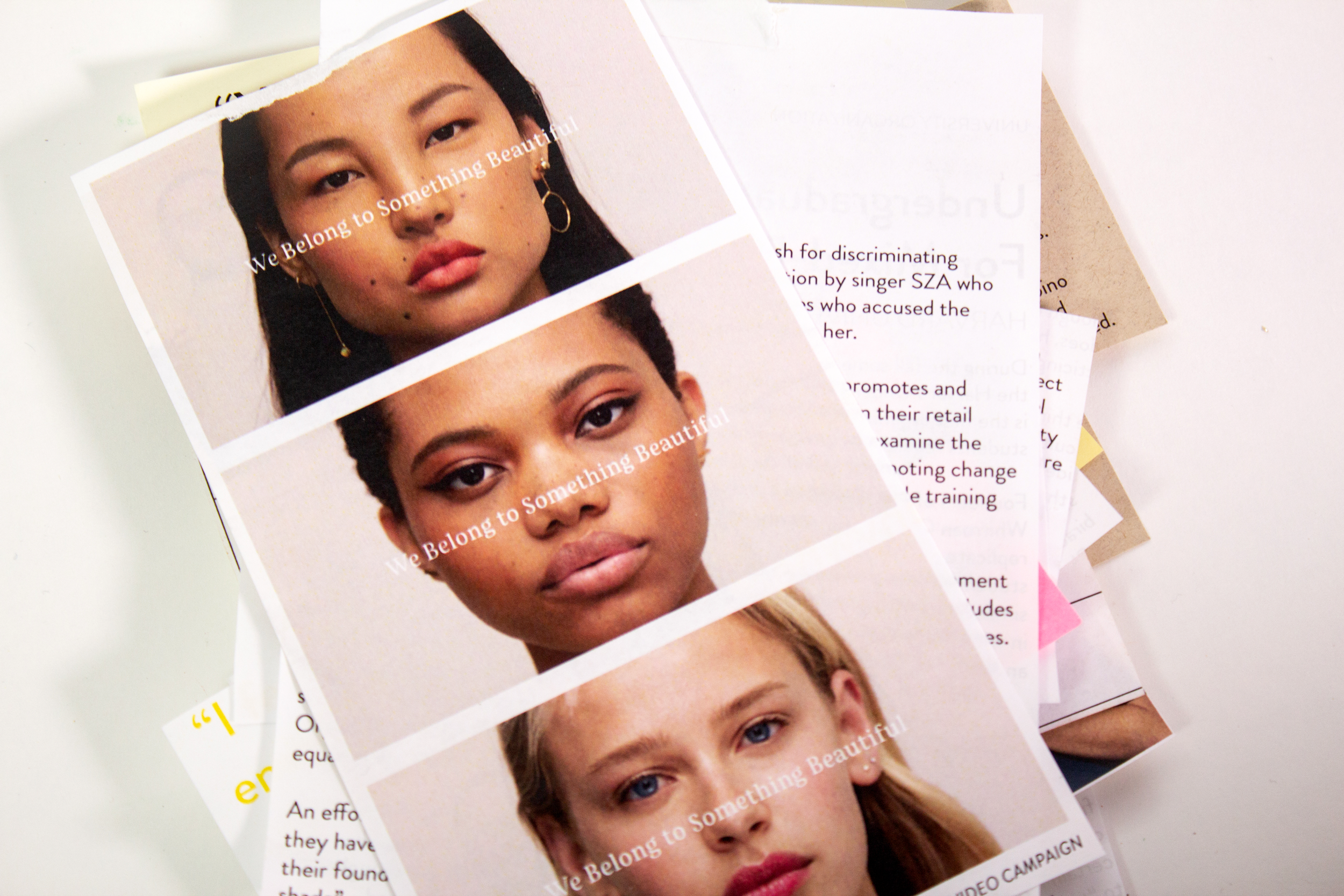

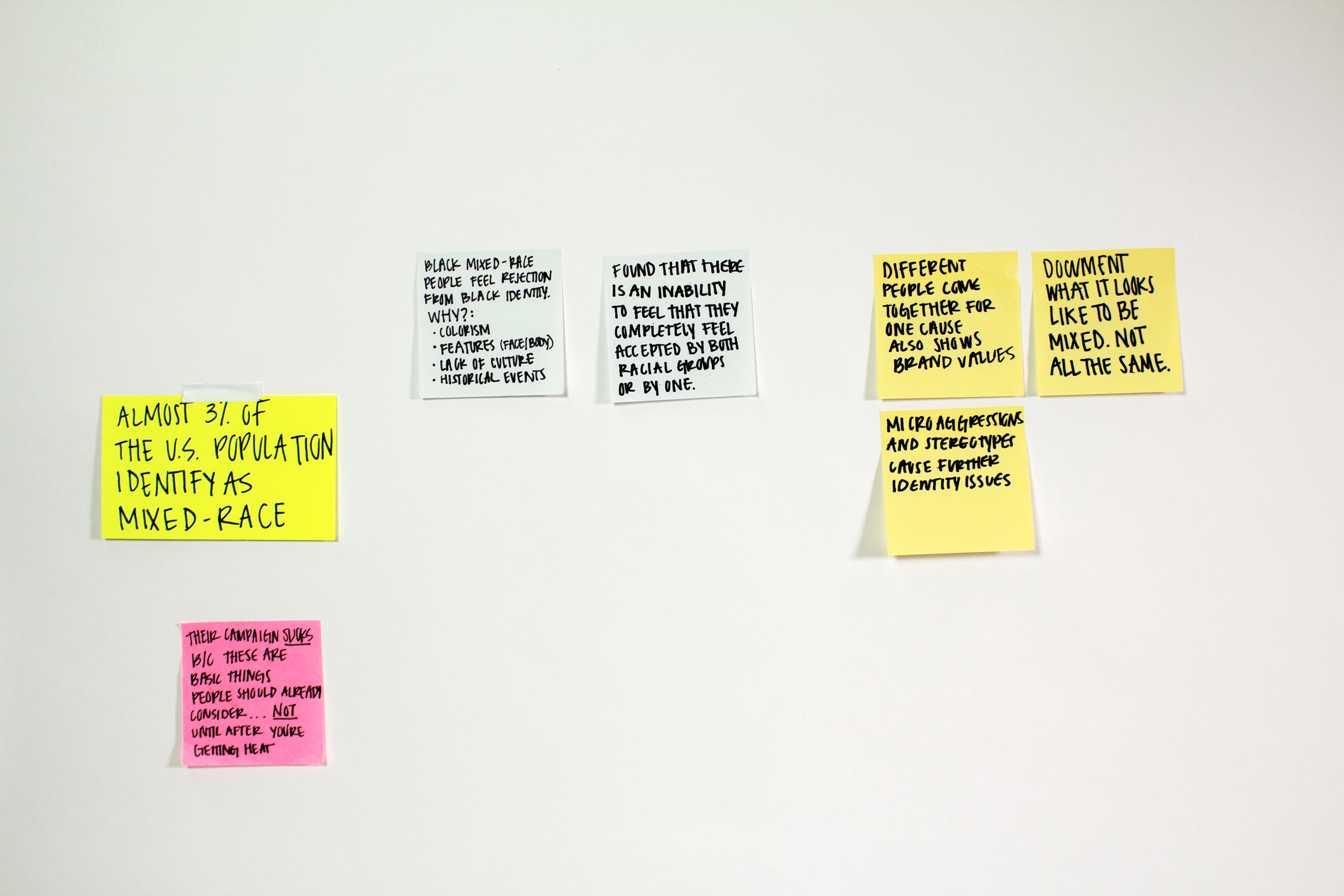
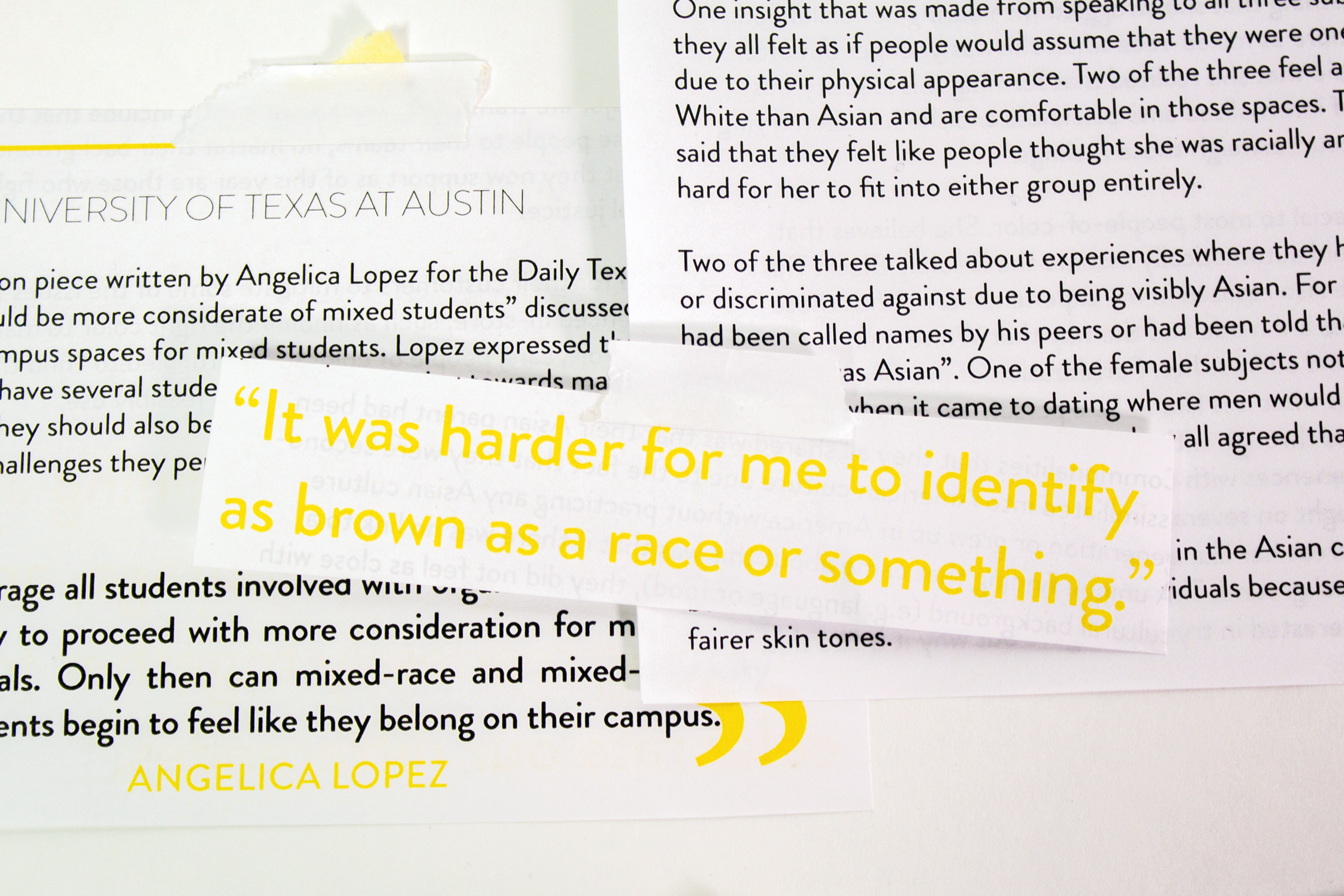
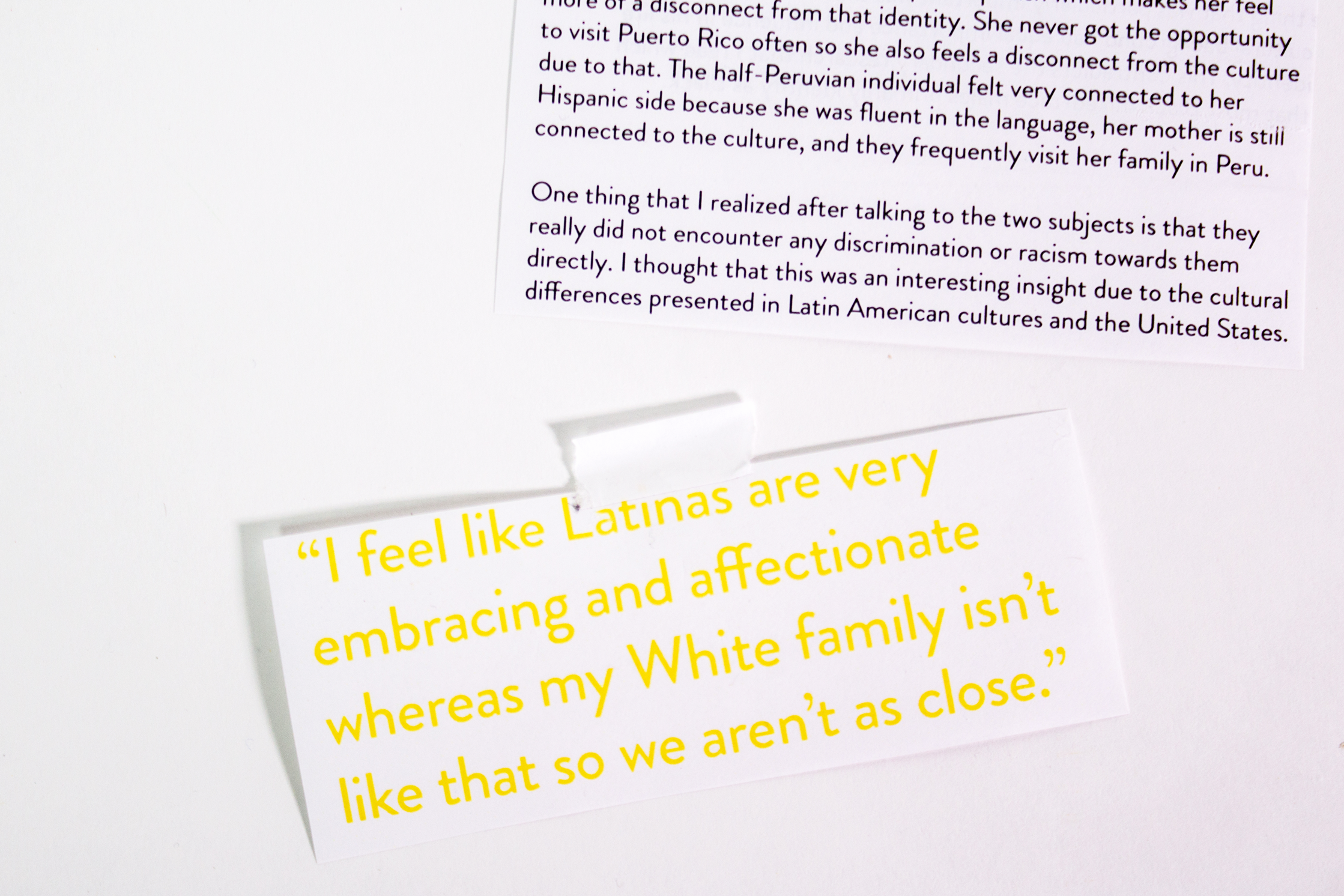
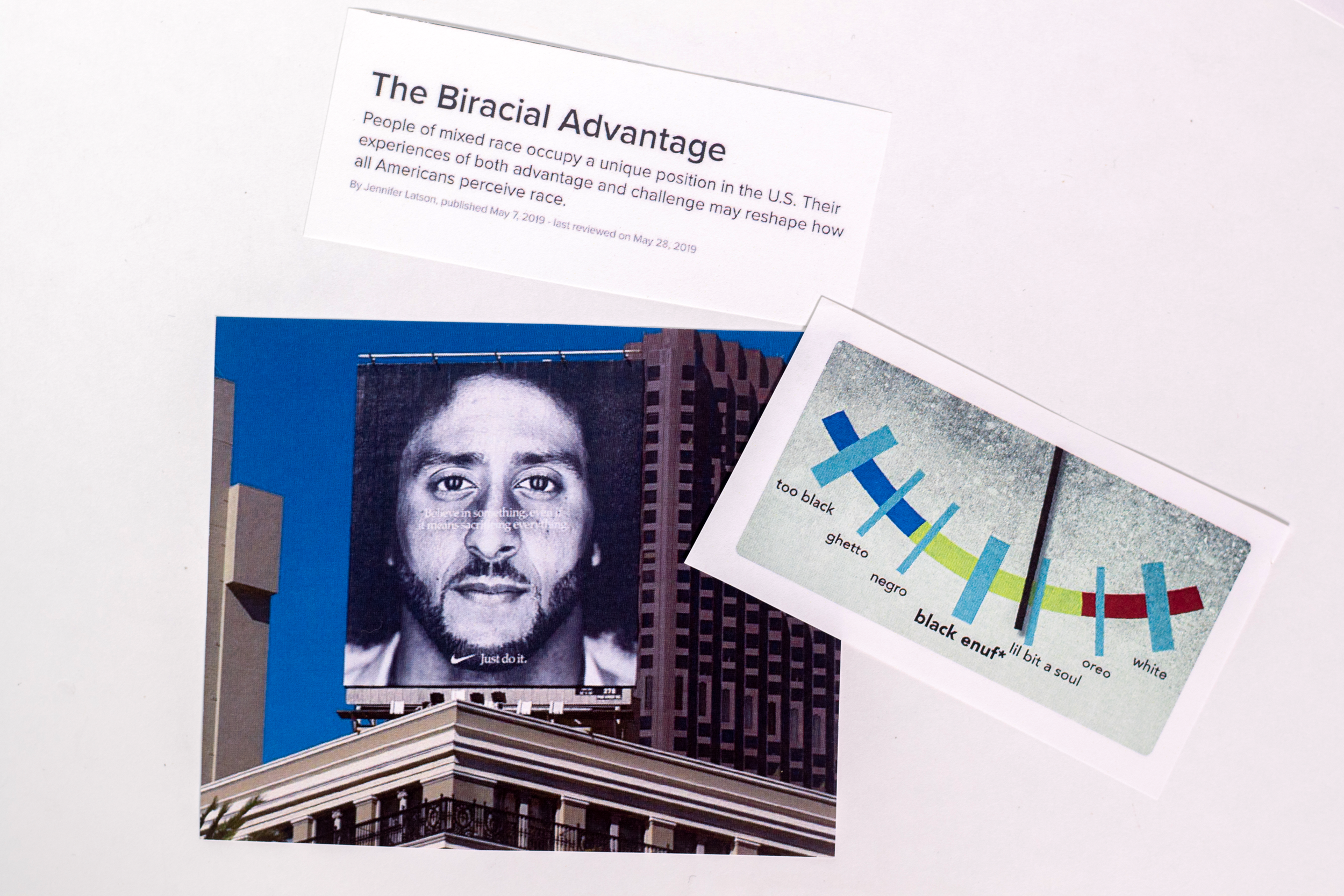

Process Notebook
A fragment of notes, sketches, and thoughts that led to the concept of the final artifact.
Qualitative Research
Eight mixed-race individuals were interviewed and asked to fill out cards with their information and how they choose to identify themselves.
These interviews with biracial individuals helped me understand individuals' experiences and how they differ. Family structure and geographic location in which these individuals grew up greatly affected the ways in which they chose to racially identify themselves. Additionally, engaging in cultural practices made biracial people feel “more connected” to one ethnicity over the other.
These individuals often acknowledge that how they perceive themselves may be different than the way that others, and society in general, would. The perception of their racial identities are often based on their skin tone, hair color and texture, and facial features that they share with non-mixed groups. All of the people had encountered issues of racial micro-aggressions and stereotypes. Several of the subjects experienced discrimination and racism but those who were half-black experienced it more frequently. Concepts of preferring lighter-skin and being praised for “white features” was a common discussion with those in the group. This raised questions for me and was something that I wanted to research further.
Secondary Research
Choosing your racial identity is not as easy as one would assume. There are several factors that go into this decision and not every mixed-race person chooses to identify in the same way.
The academic articles referenced helped make sense of how and why different mixed-race people choose to identify. Factors include: their individual racial makeup, the environment they grew up in, where they live geographically, stigmas around stereotypes, what languages they speak, their physical appearance, their ancestry, socioeconomic status, and others.
A lot of the resources focused on biracial individuals in Northern America who were half black and half white. In the United States, the most common factor that mixed-race people use to racially identify themselves is physical appearance, especially the shade of their skin. In addition to this, their experiences and interactions with monoracial groups influence how comfortable they are identifying with a single race. When a mixed-race individual feels rejection and isolation from monoracial groups they want to identify with, distressing thoughts such as “not being one race enough” or identity issues can arise.
What I gathered from all of this was that there is an internal conflict that exists within mixed-race people. There are “expectations” of what someone of a certain race looks like and often times mixed-race people have been told they fit in with one racial group due to their physical attributes — usually skin color.
“You think You’re Black?” Exploring Black mixed-race experiences of Black Rejection.
Meeting in the Middle: The Role of Mutual Biracial Friends in Cross-Race Friendships.
Sounding Black or White: priming identity and biracial speech.
Biracial American Colorism: Passing for White.
Not Quite Monoracial: Biracial Stereotypes Explored.
Who is Black, White, or Mixed Race? How Skin Color, Status, and Nation Shape Racial Classification in Latin America.
Health and Behavior Risks of Adolescents with Mixed-Race Identity.
A tale of two “halfs”: being black, while being biracial.
Booklet
This booklet contains more information about the content listed above with further explanations and more detail.
Reflection
These iterative projects were about the uncertainty behind judging identity, cultural appropriation, and consumerism.
Initially, my topic of research was to explore mixed-race identities. I performed several interviews with people who identified as mixed-race, which led me to the discovery that those who were black mixed-race were discriminated against for their appearances and experienced racism more than their peers who were non-black. After conducting research, I went through a series of projects exploring mixed-race identity and related content (e.g. cultural appropriation and identity).
I began to focus on beauty standards and how they are reflected in consumer products, such as cosmetics. The beauty industry focuses on providing products that often have to do with skin color. Women of color — especially those with darker skin tones — are an afterthought when it comes to beauty products. Major brands did not begin to expand their shades of darker foundations until FENTY Beauty started this trend in 2017. Upon its launch, FENTY Beauty released 50 shades of foundation. Today we see a surplus of foundations in various shades; however, foundation is the only product that has been made more inclusive.
Products and brands throughout society project an unrealistic standard of beauty that lacks inclusivity for people of diverse backgrounds and skin tones.
Concept Development
My goal is to bring awareness to this issue, disrupt the current beauty standards and provide representation for women of color in brands.
About the Company
Equity Agency is a business that provides a certification process and guidelines for companies to ensure their products are equitable.
Equity Agency believes that brands, together with their consumers, can create an all-inclusive retail market that encourages diversity, equity, and inclusivity by being more conscientious of their actions, messages and products and how this is being translated within their businesses.
“We are a company that values equity, inclusivity and diversity and we want to make a change within the realm of consumer markets.”
Process
The following is a recap of the process and ideation of the final artifact. There were changes in the logo, branding, certification seal design, and website.
Screenshots of the website development.
Equity Agency is bold, expressive, and inclusive.
The branding for Equity Agency took inspiration from protest posters, fashion and beauty icons, and print publications.
“There's a huge world of women of color. It's not just black and white.”
— Rikki Wright
LOGOS
TYPOGRAPHY
COLOR PALETTE
Certification Sticker
These seals would be used for markers of certification to prove that a company has met standards of inclusivity.
The pink sticker corresponds to a beauty product or brand.
The blue sticker corresponds to a clothing product or brand.
The yellow sticker corresponds to a haircare product or brand.
How this might look on product packaging.
Website
To see the mock-up, click here.
The beauty industry is not perfect and neither is this project — it is what it is.
Thanks to everyone who listened to me complain about this for the past year.
Thank you to Kelcey Gray and Jason Wilkins for motivating me to get through this process. Thanks for Understanding.







